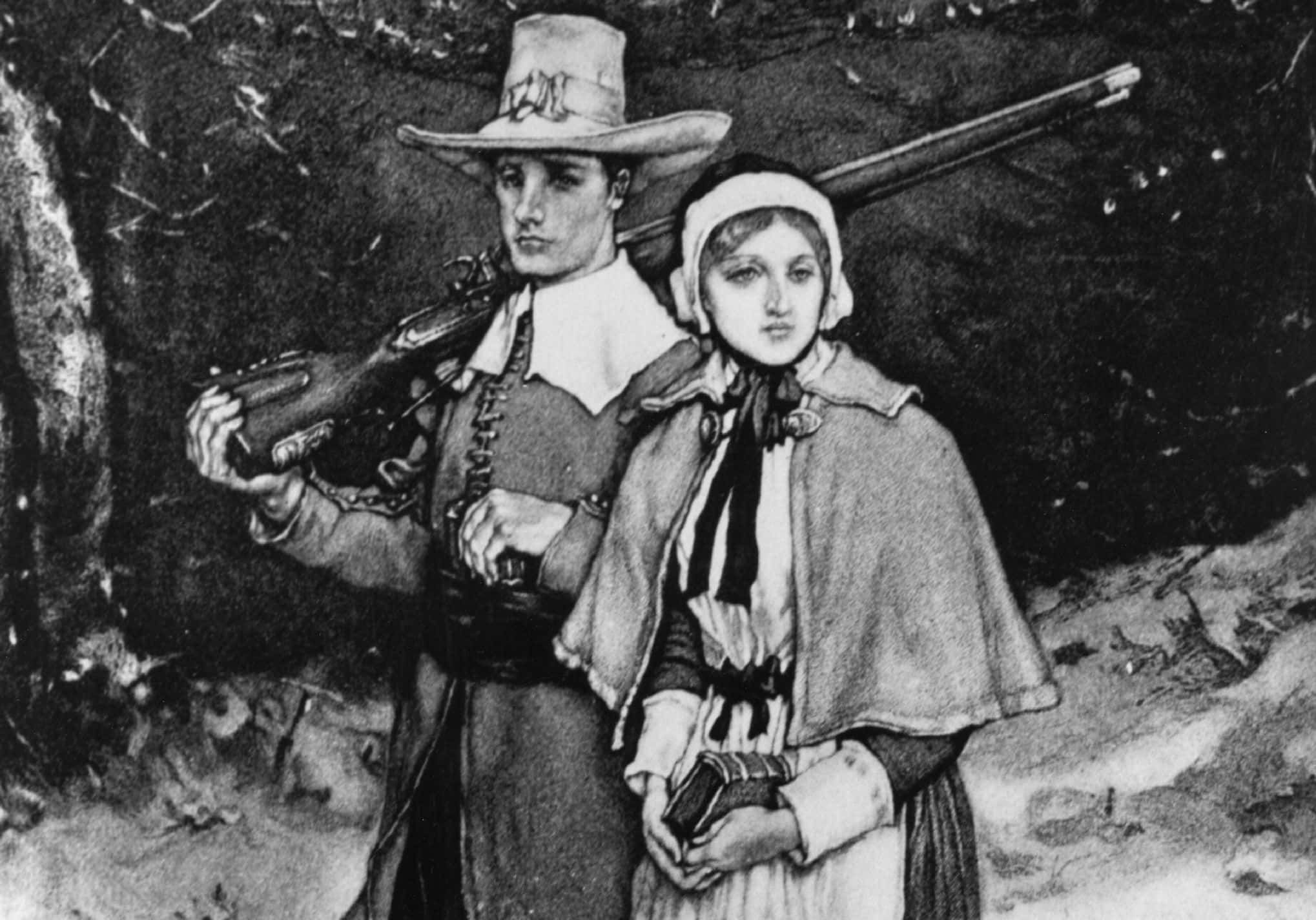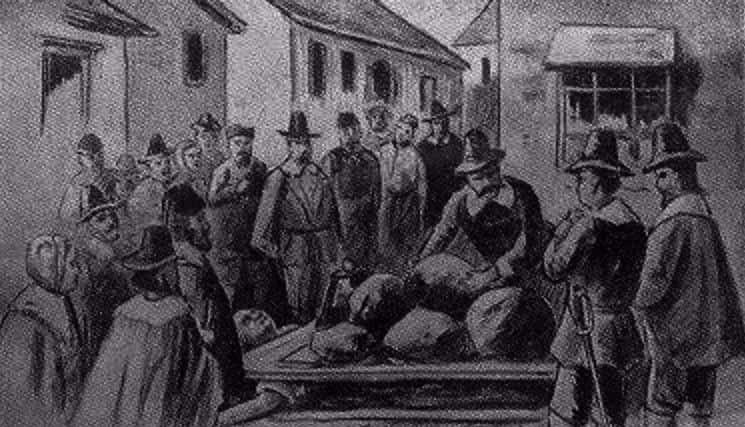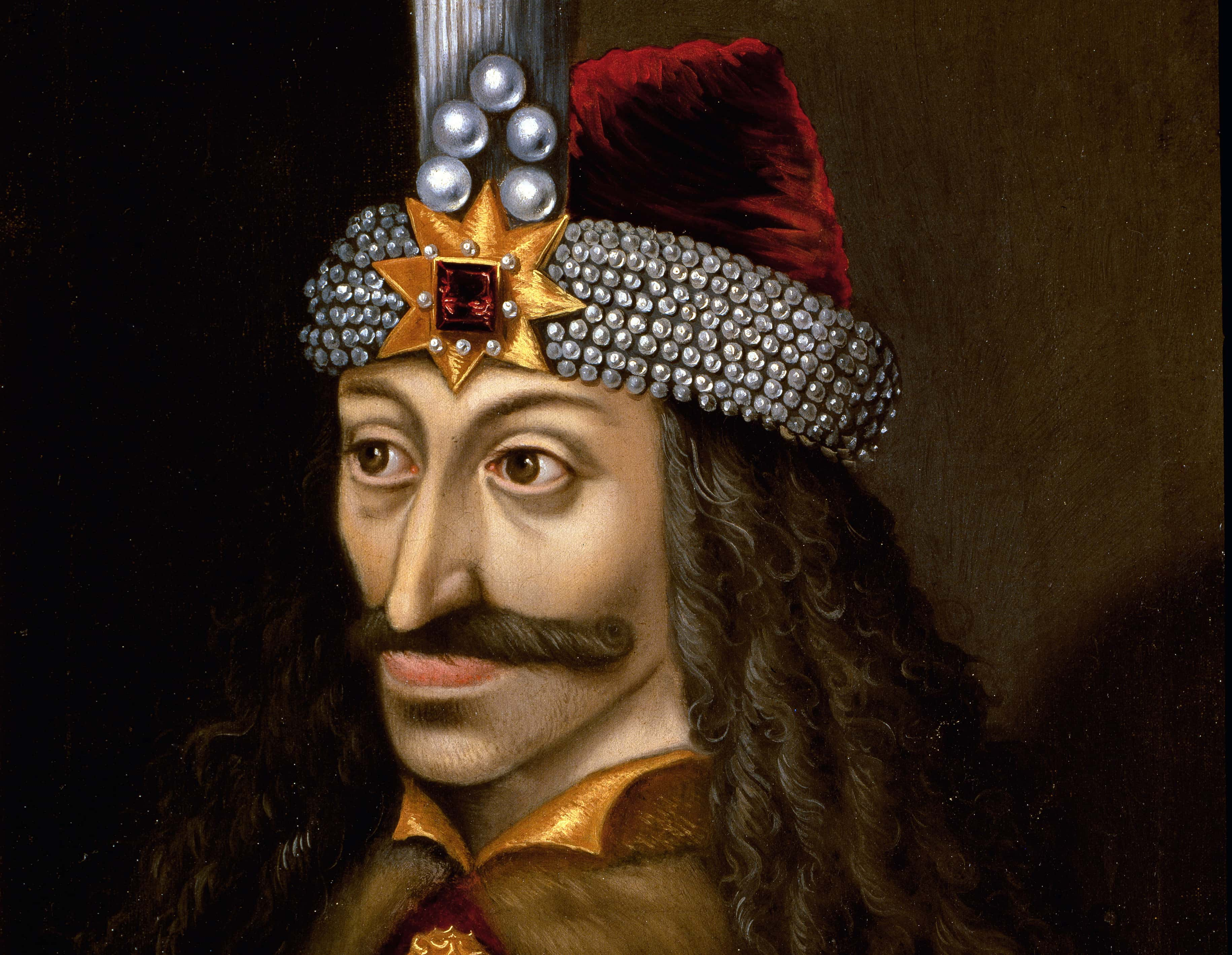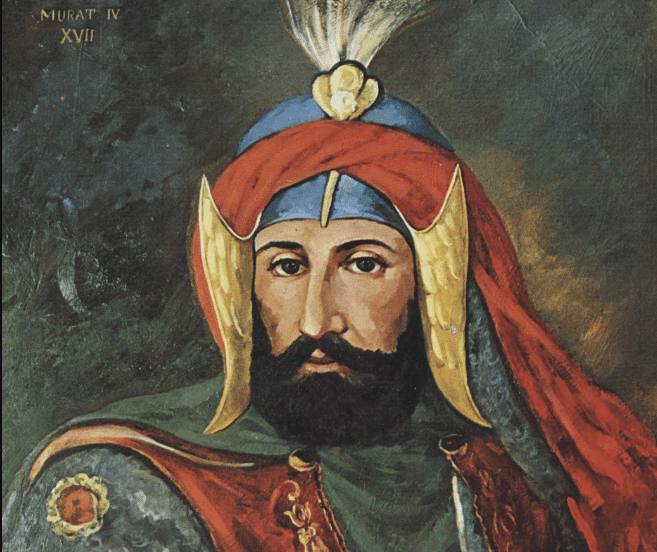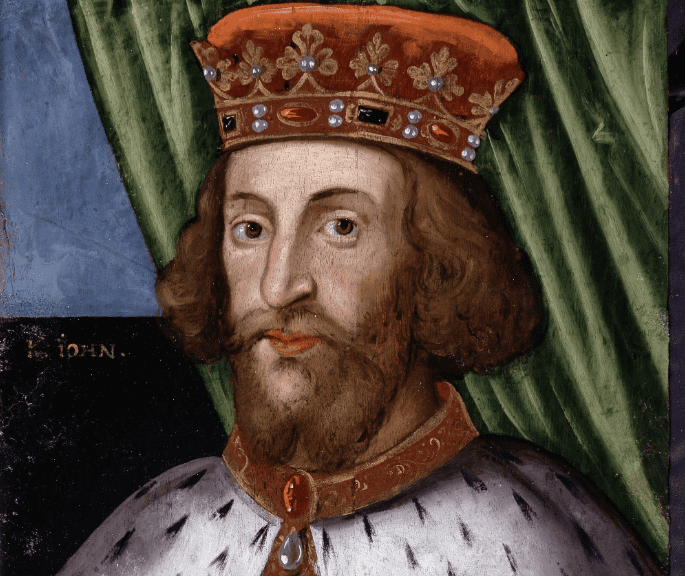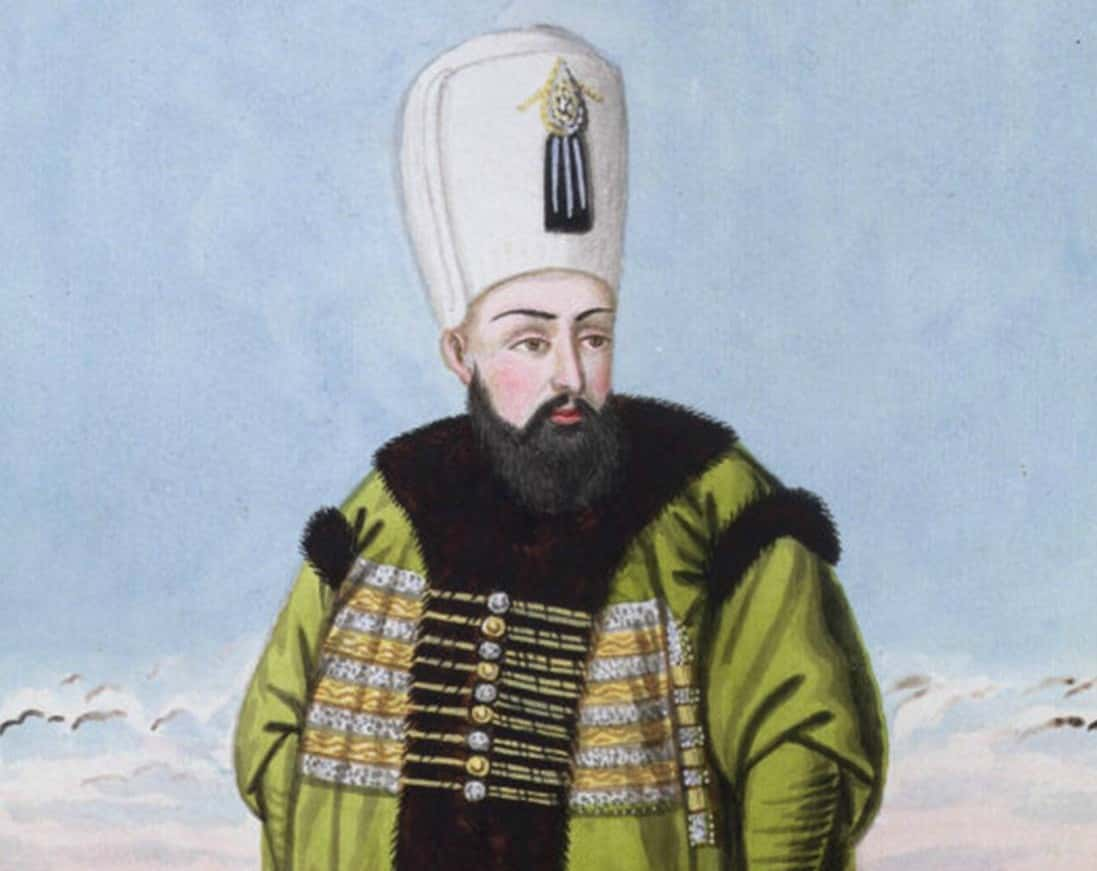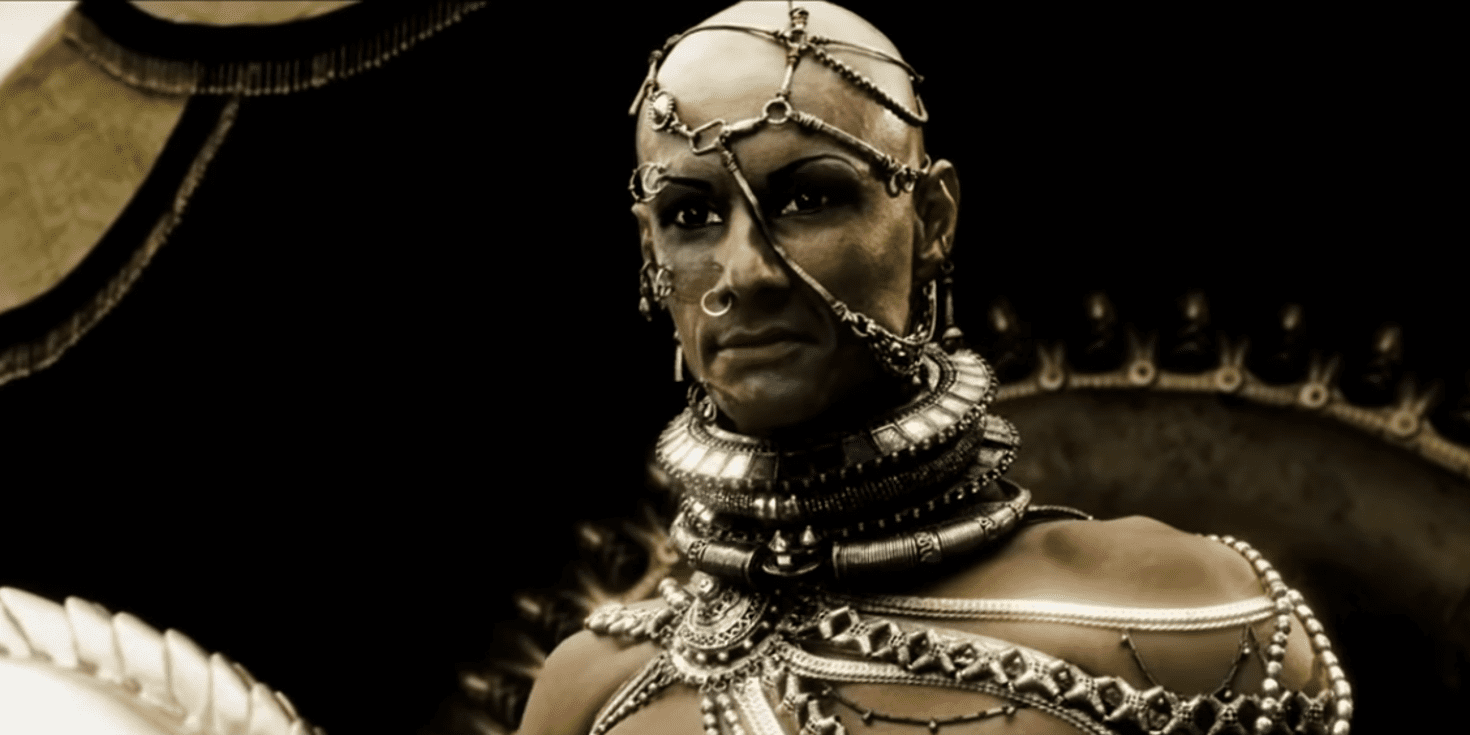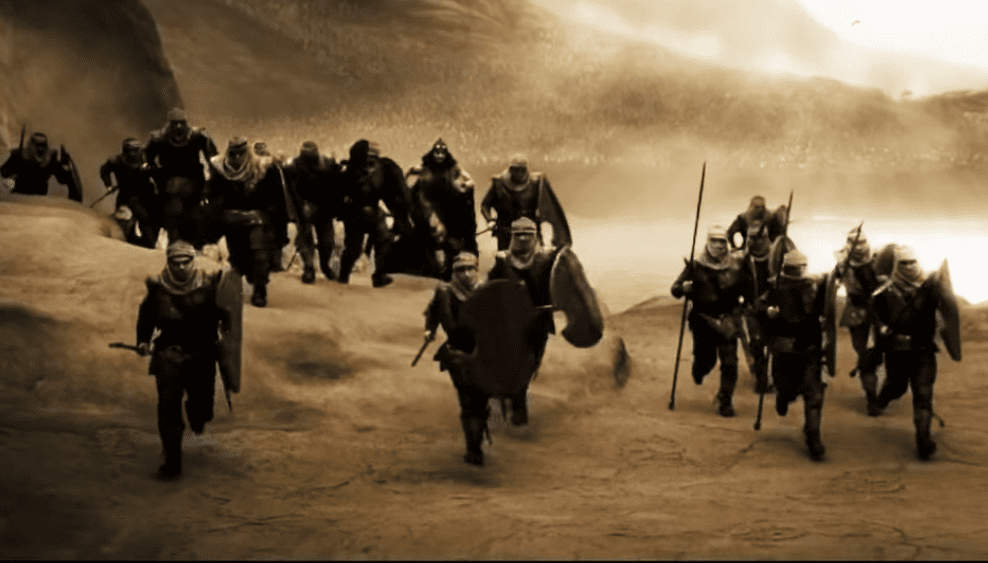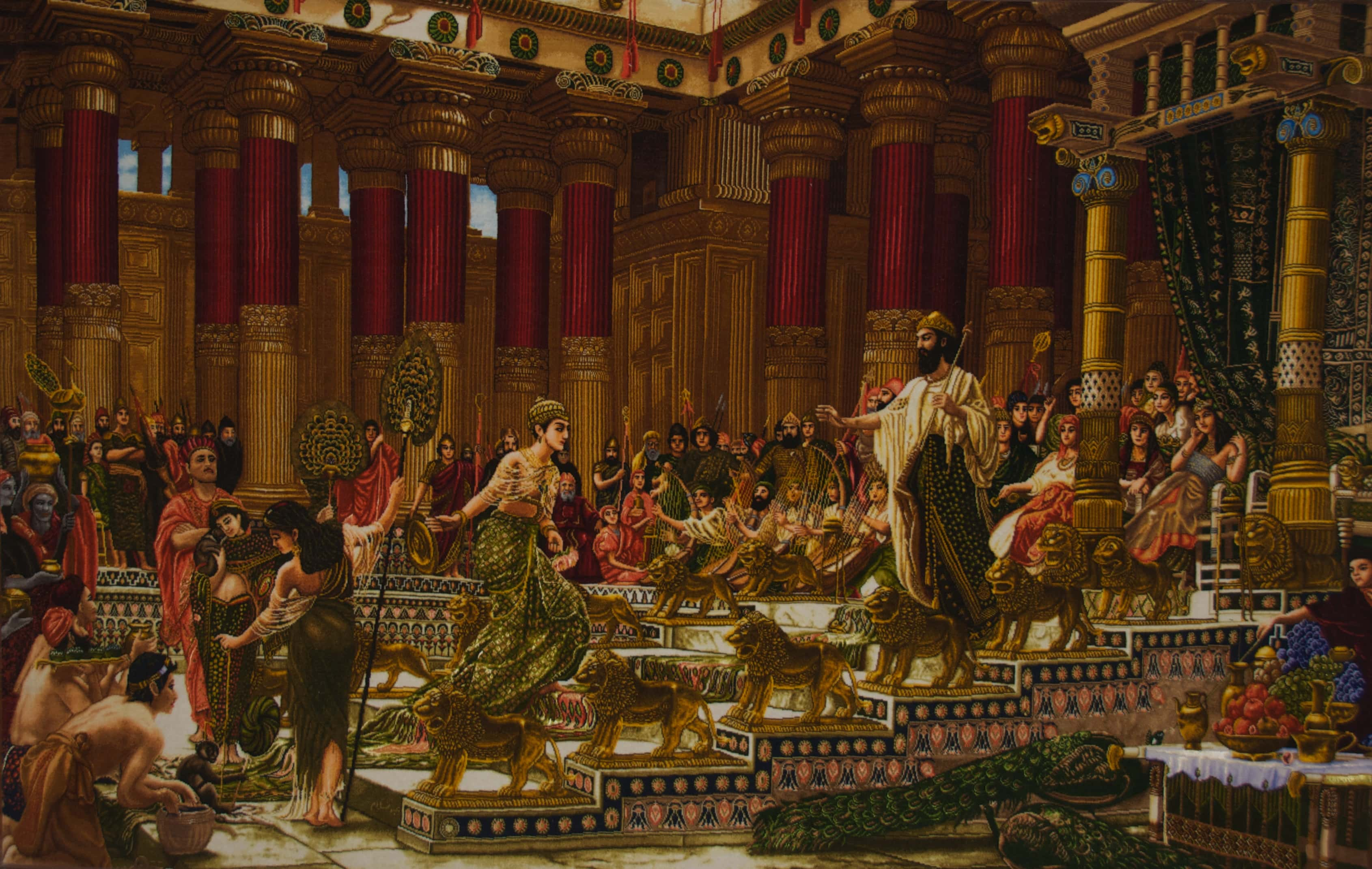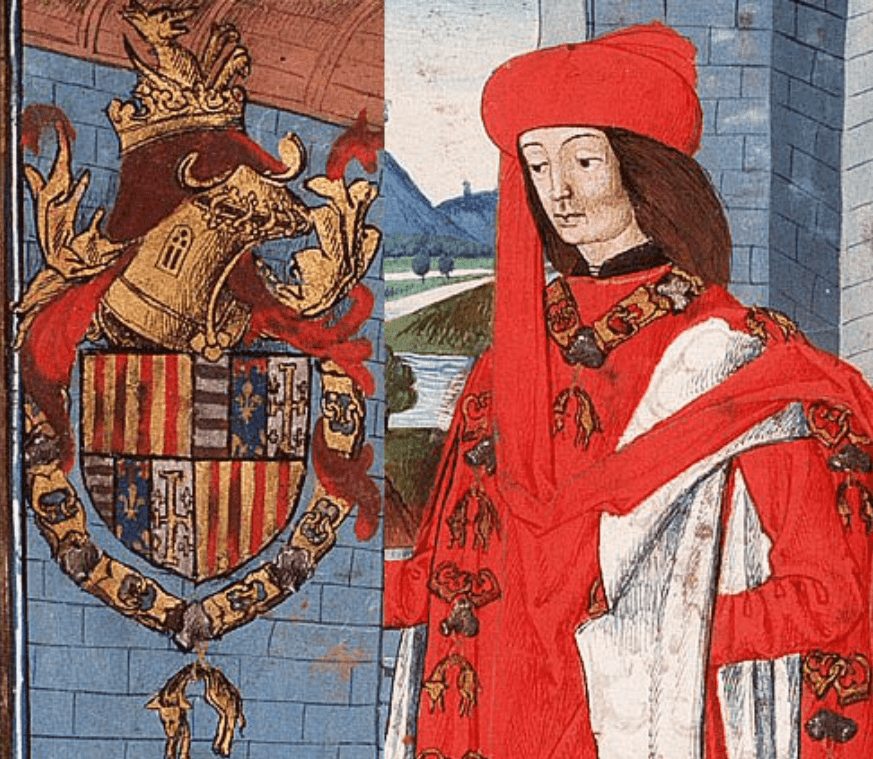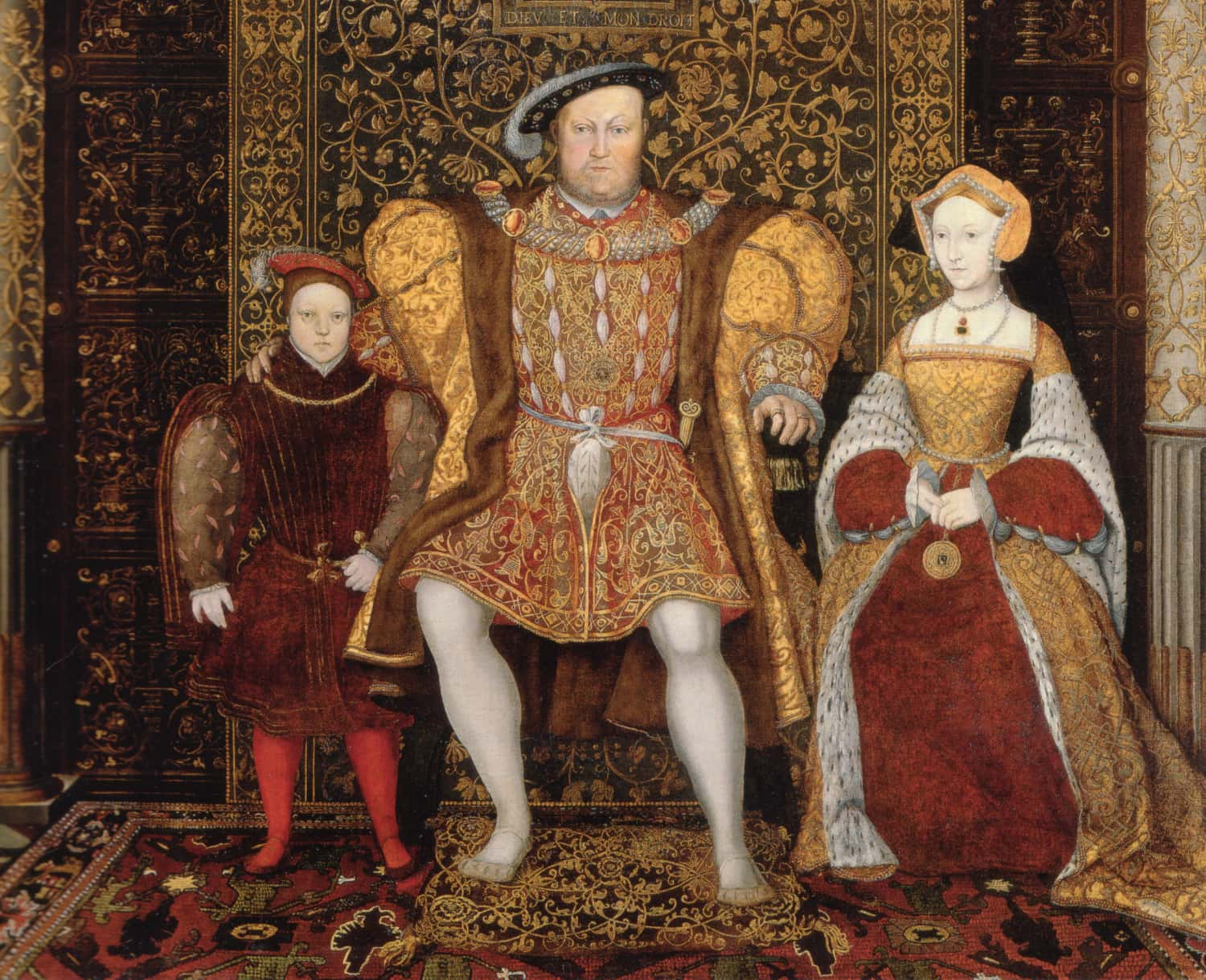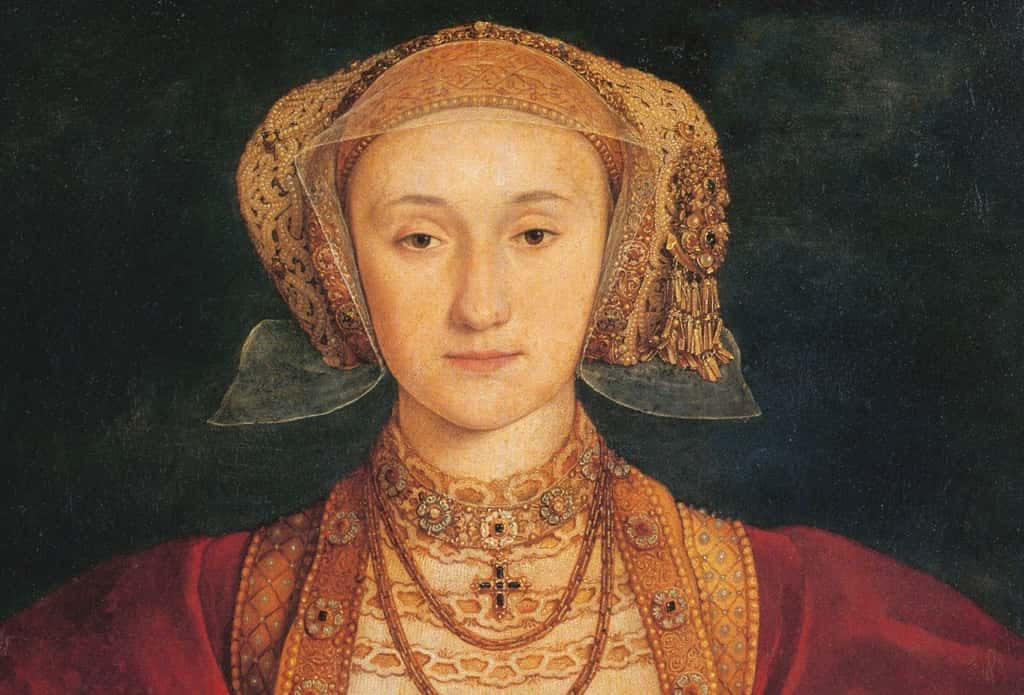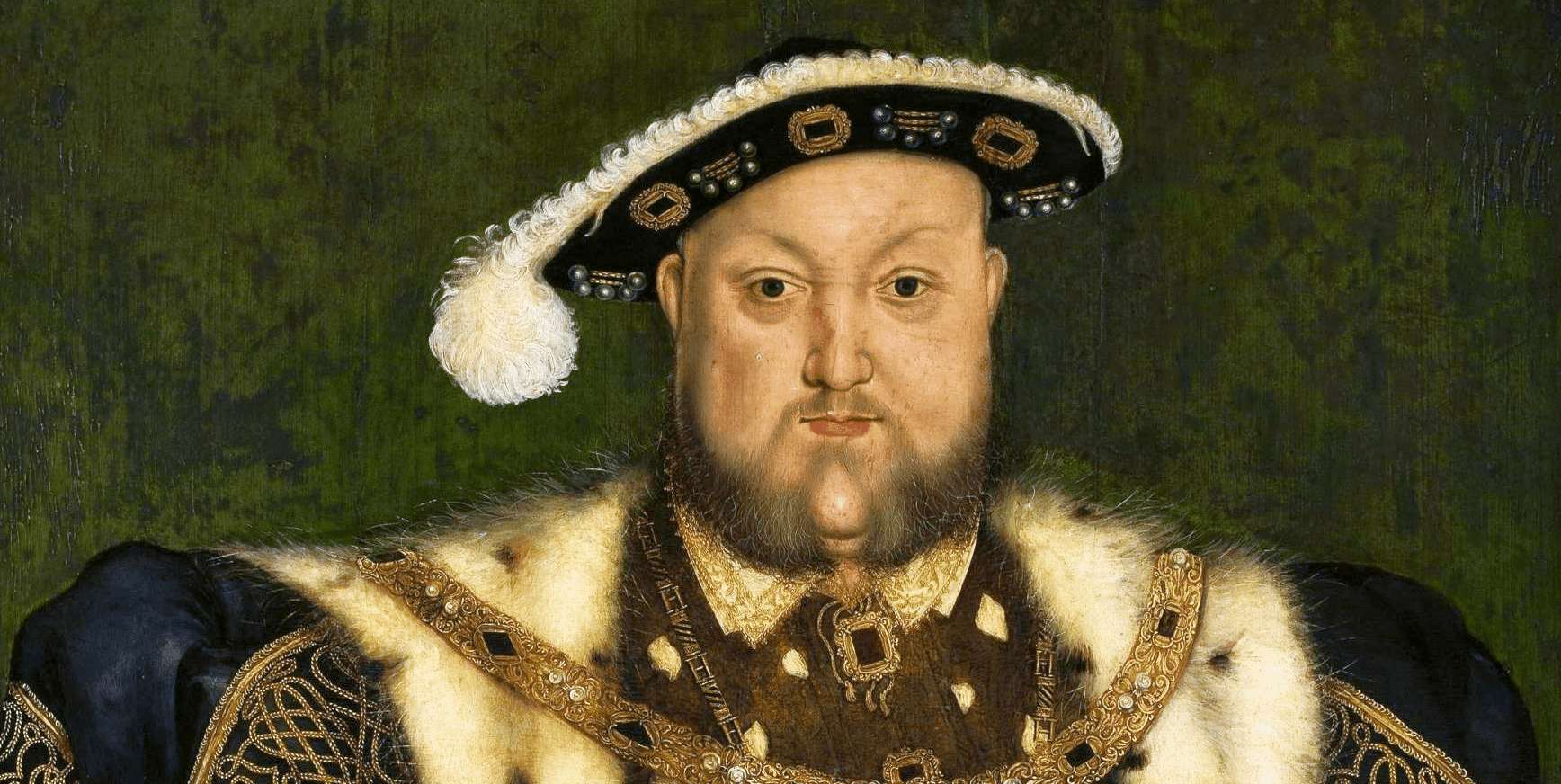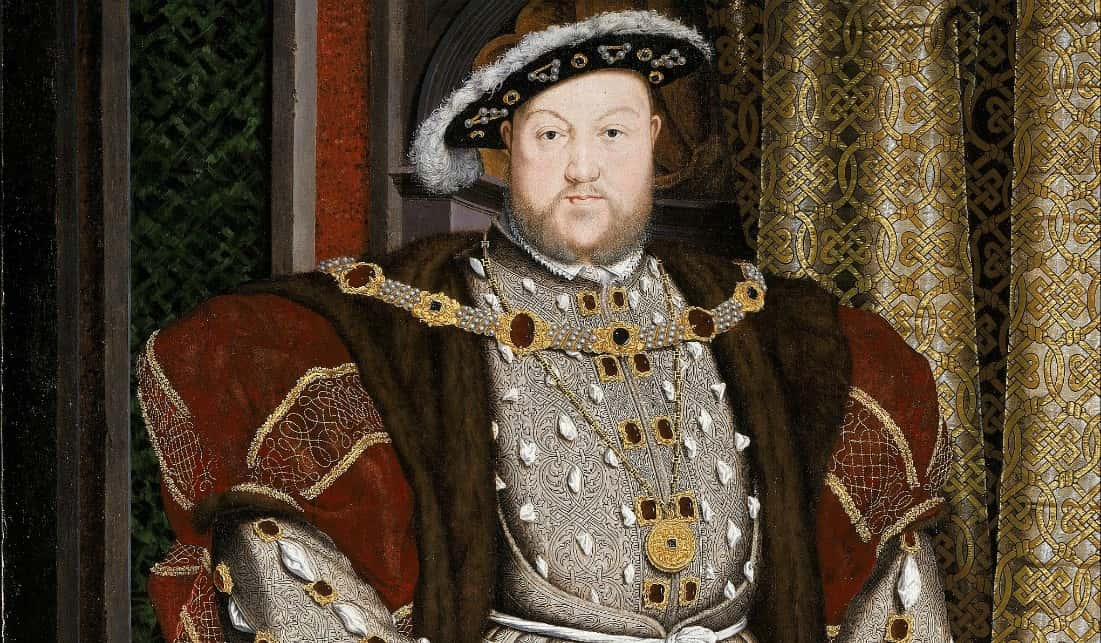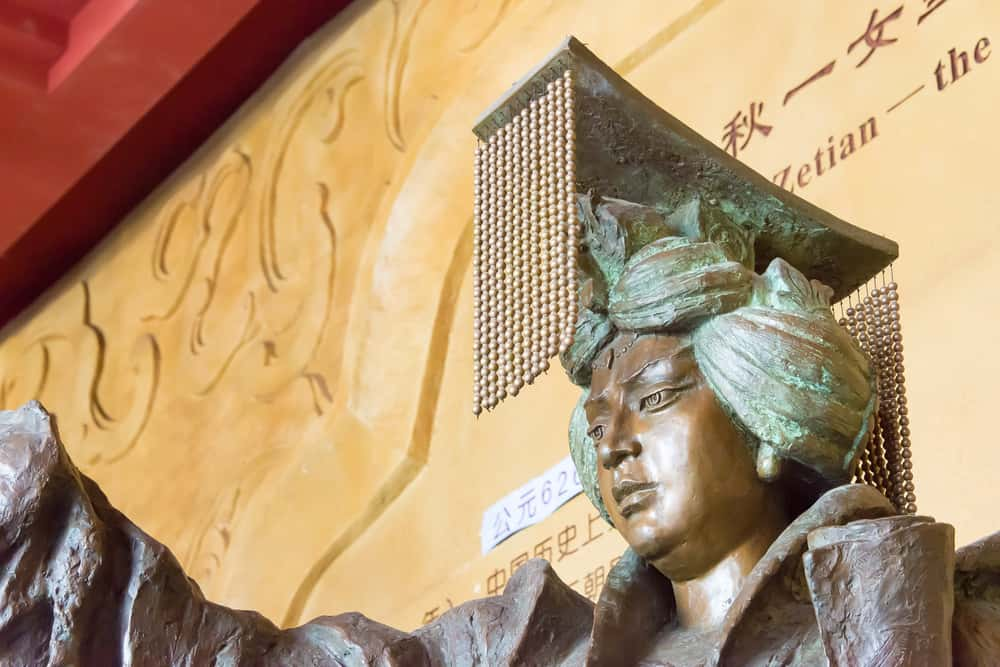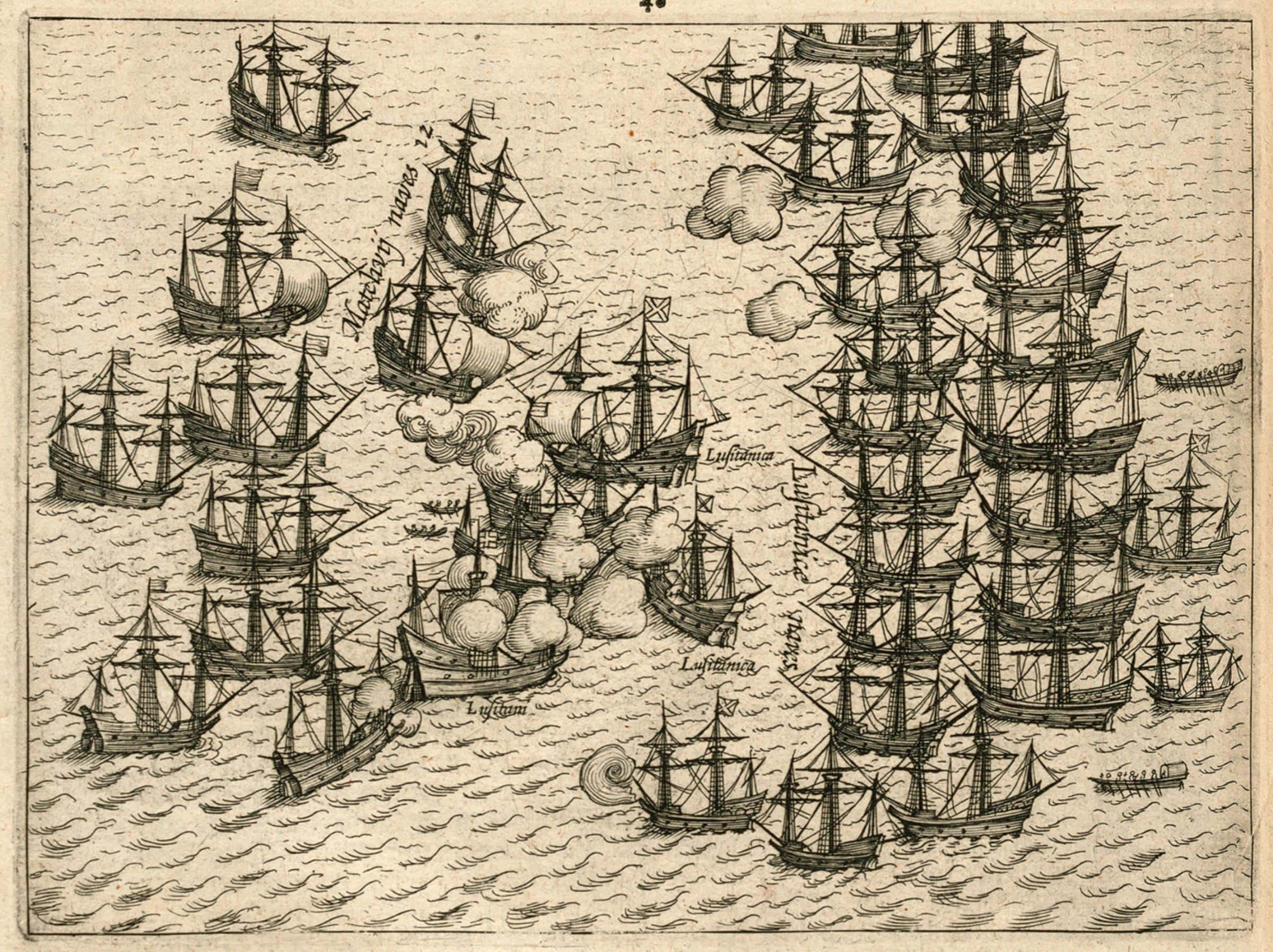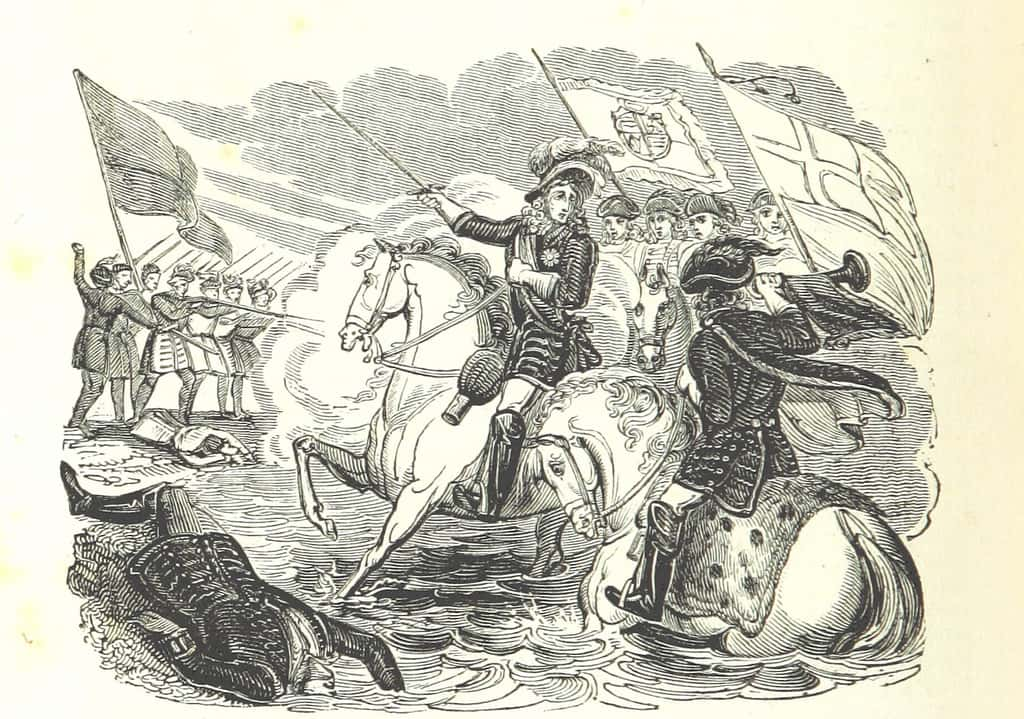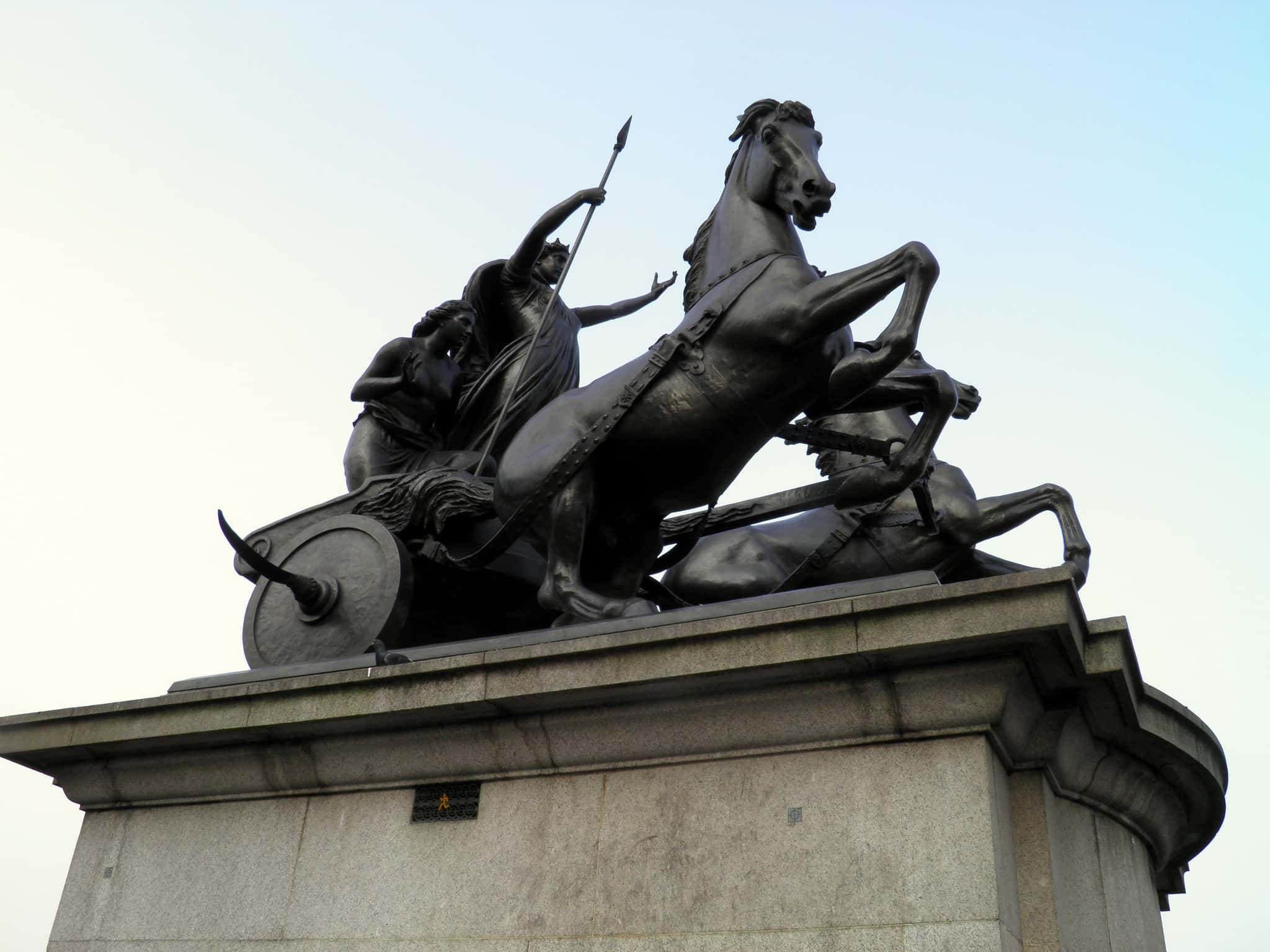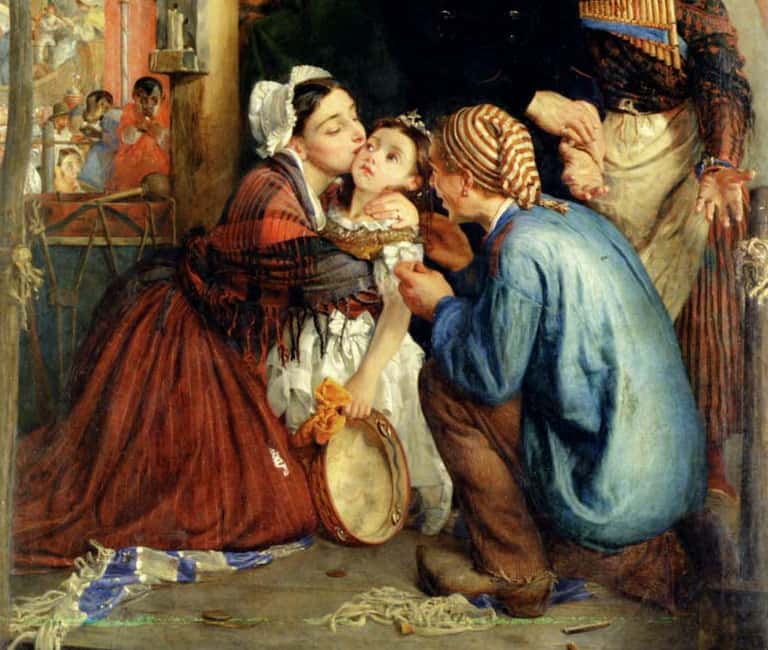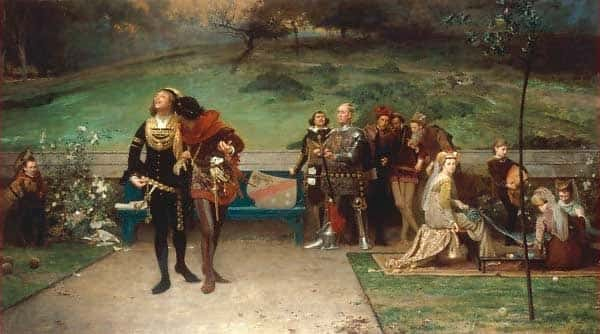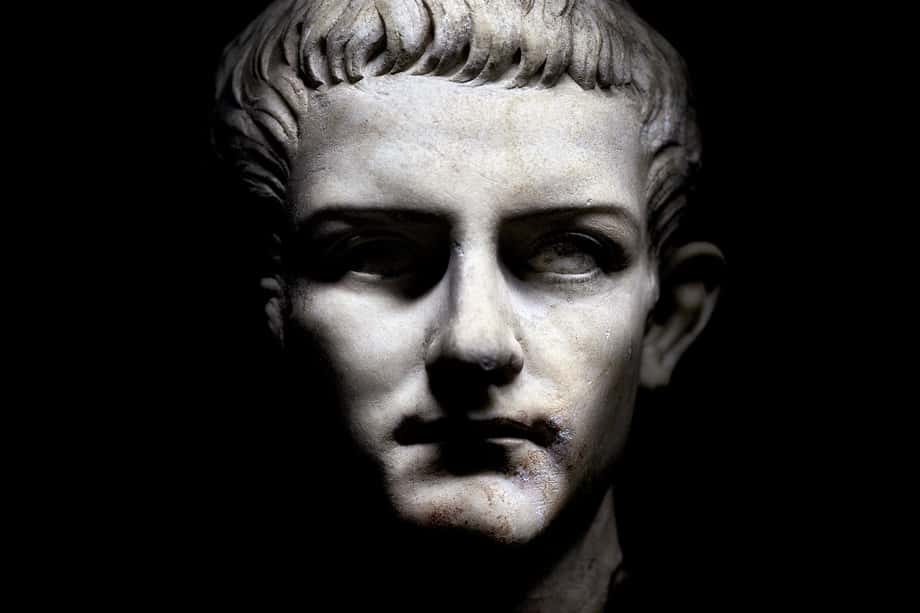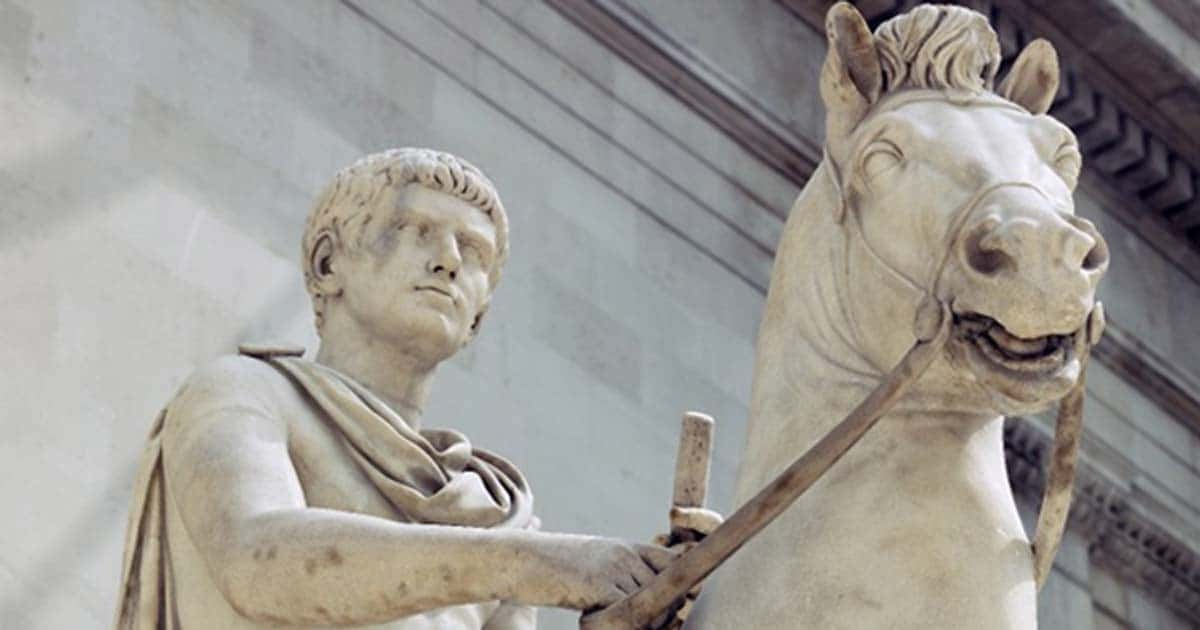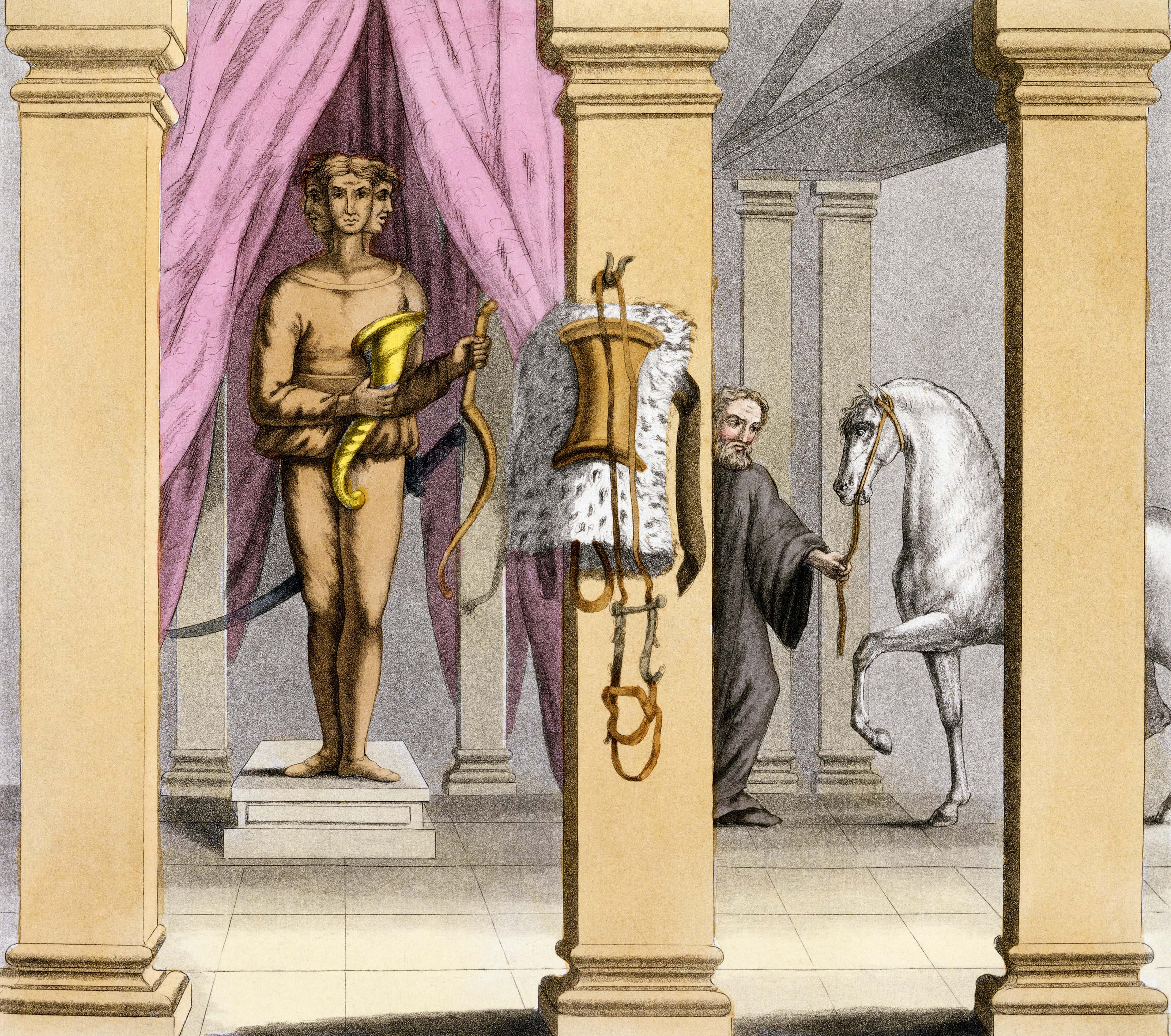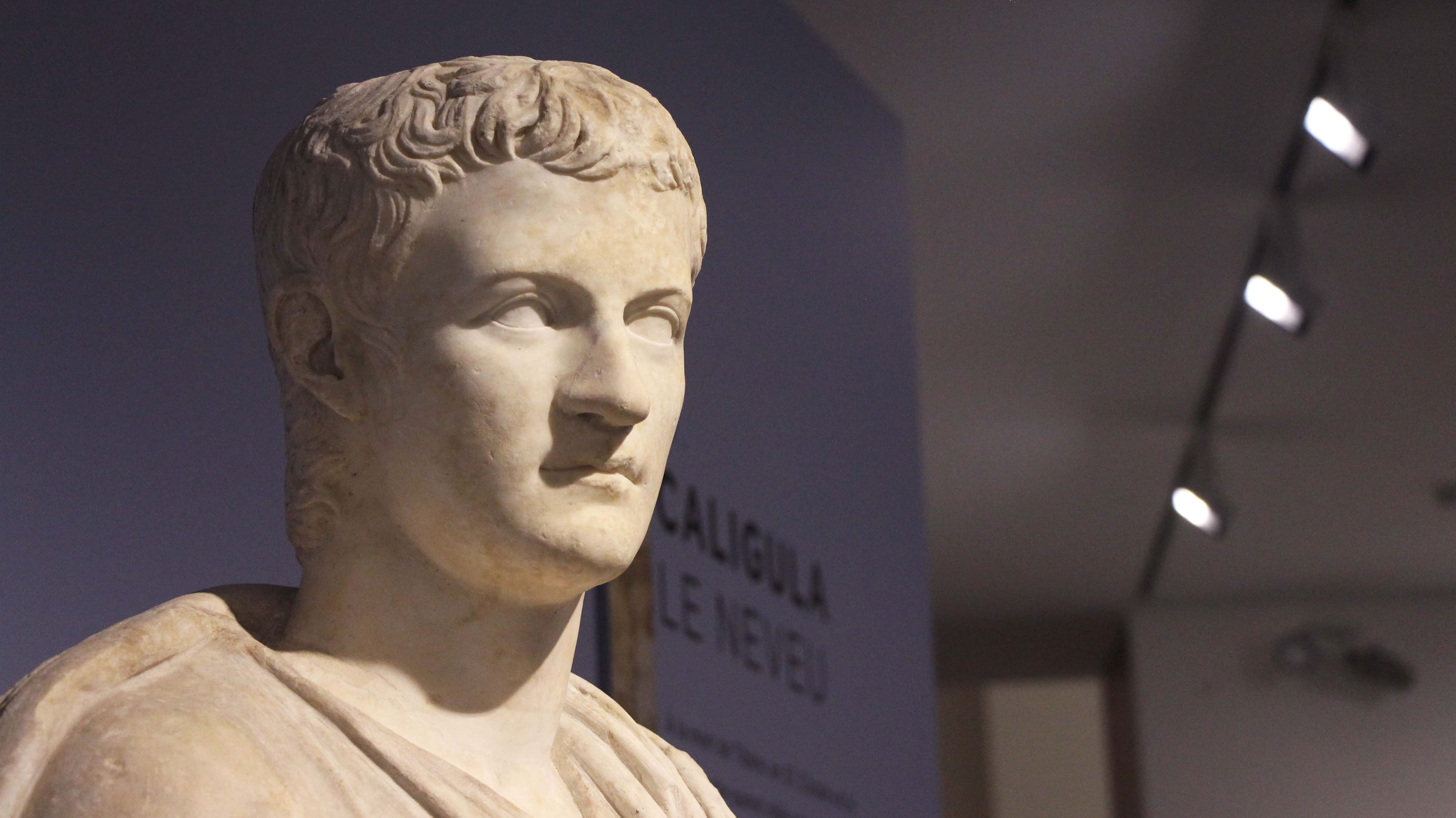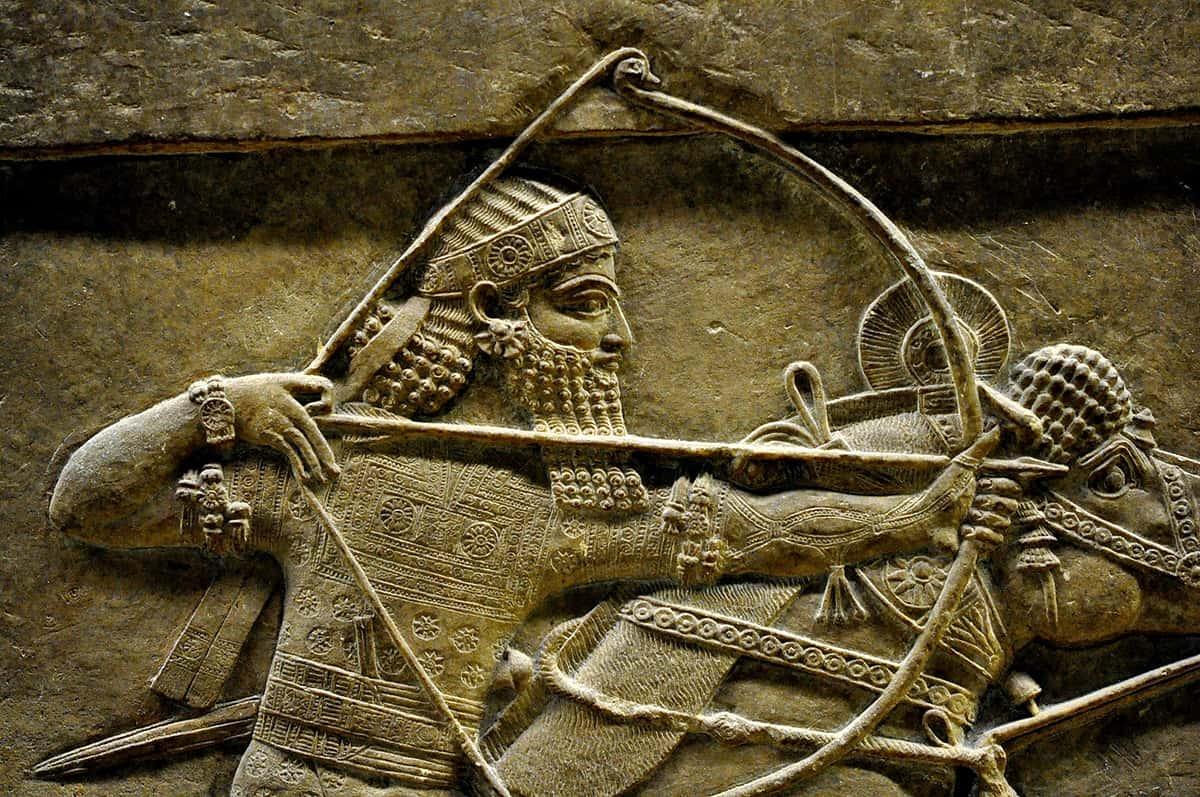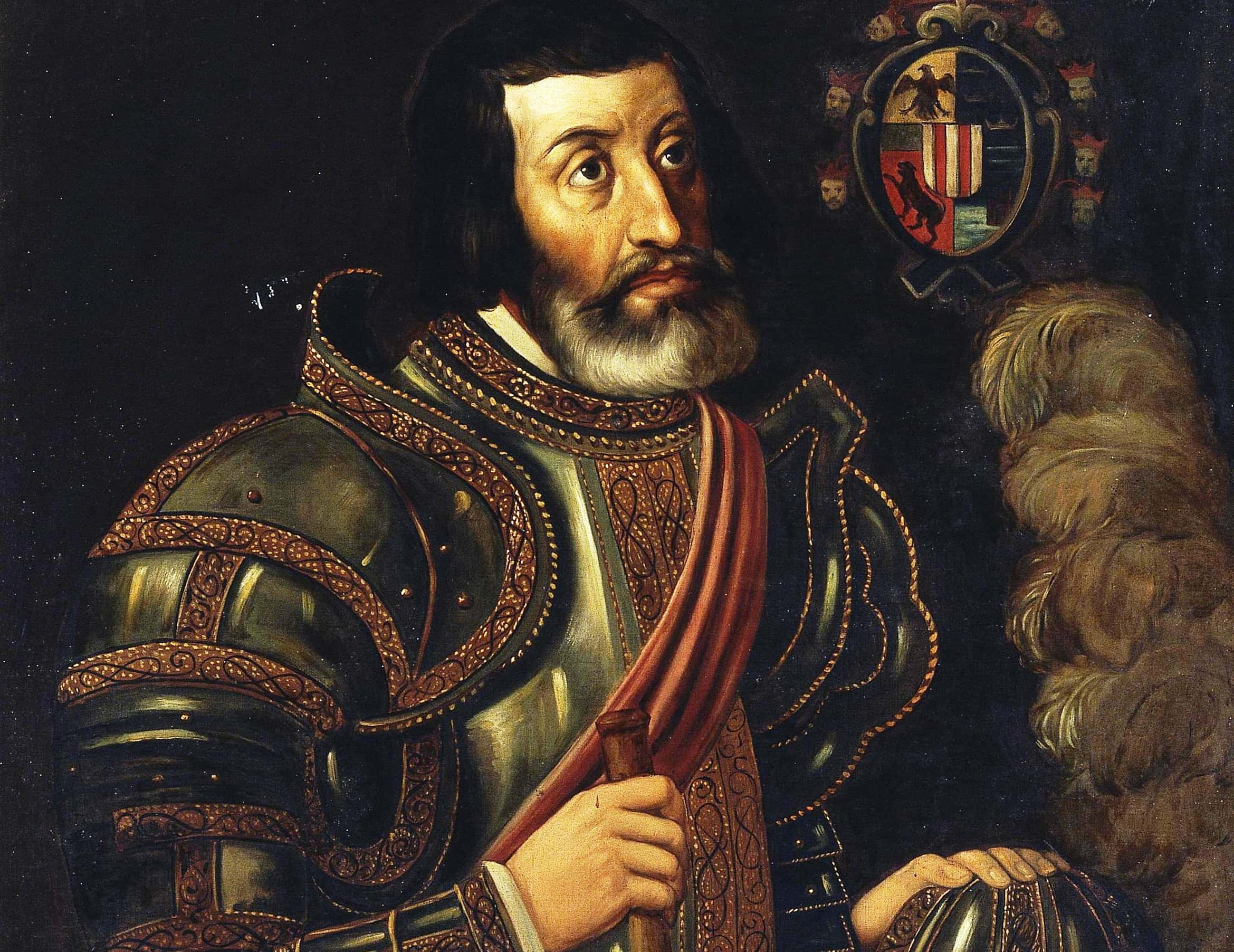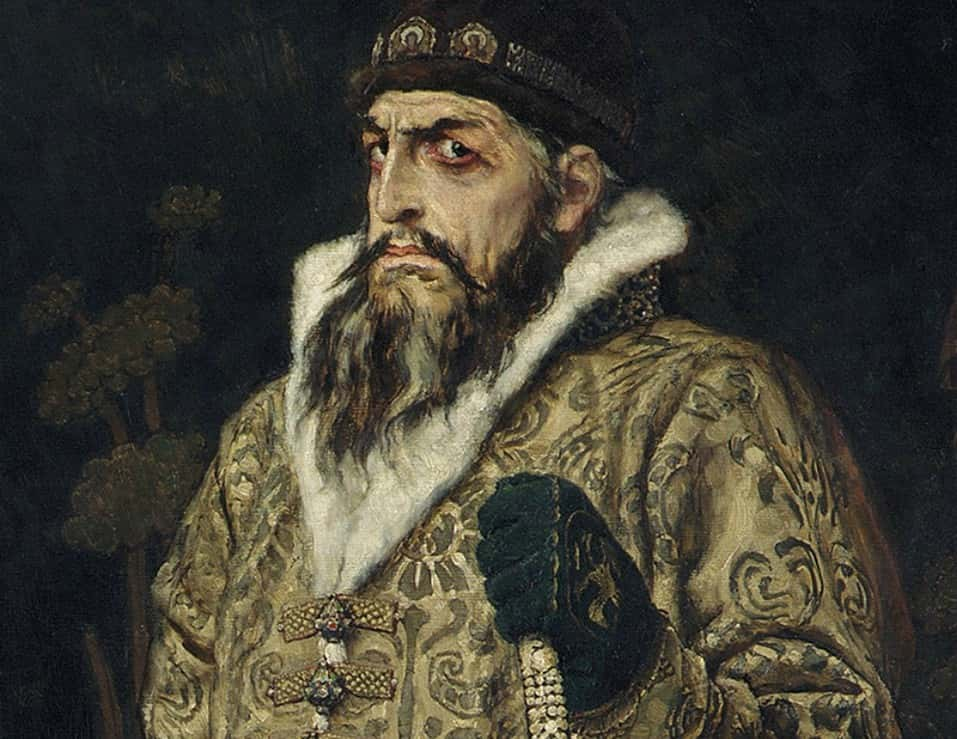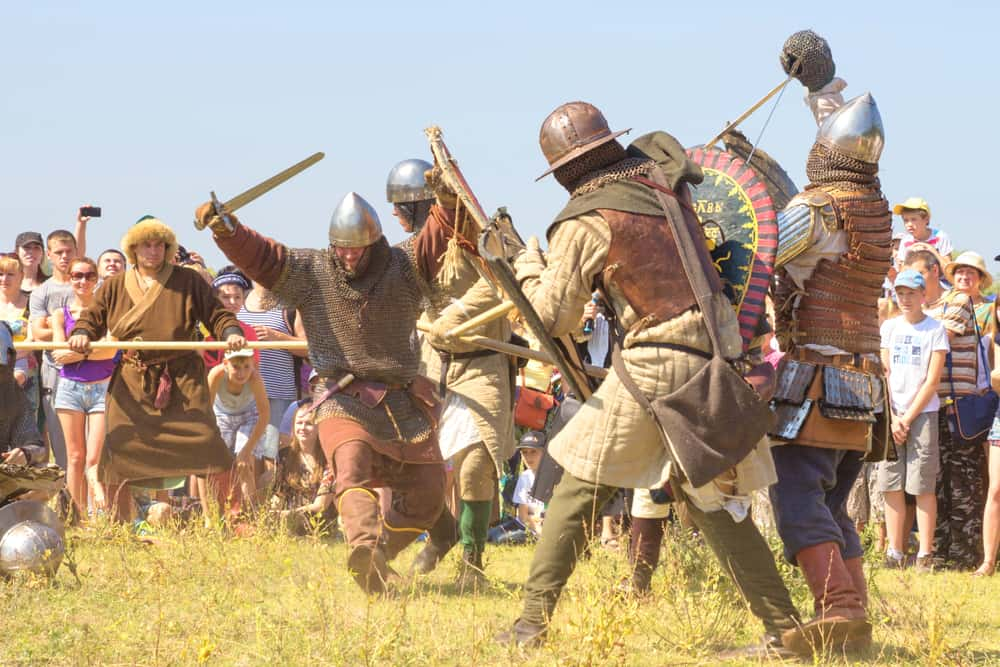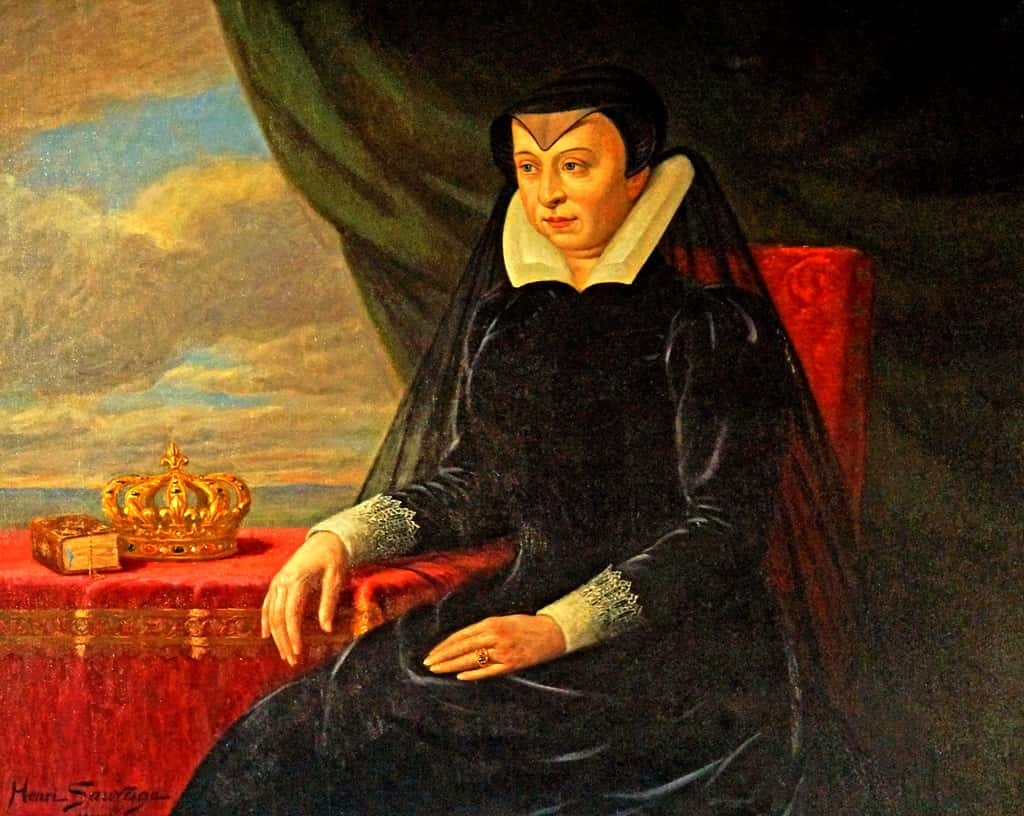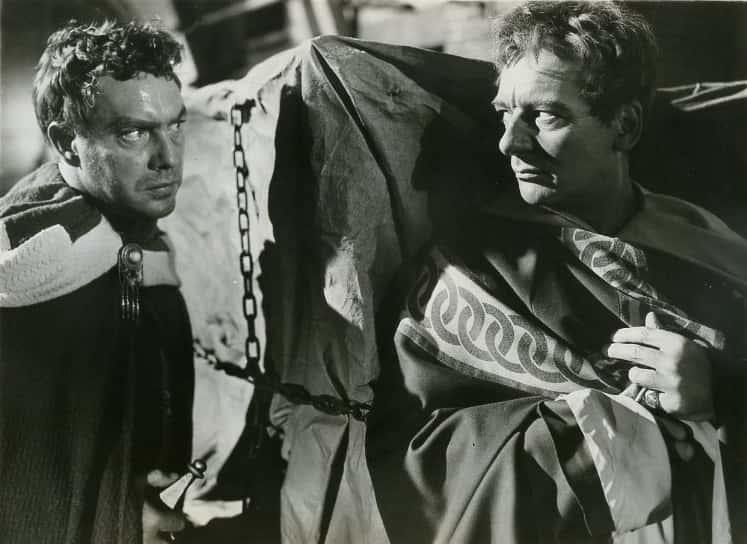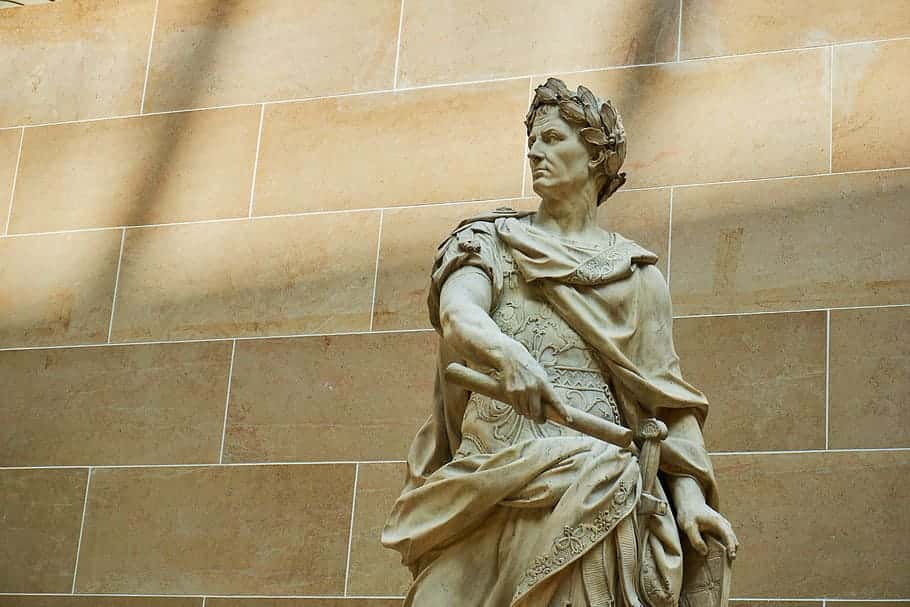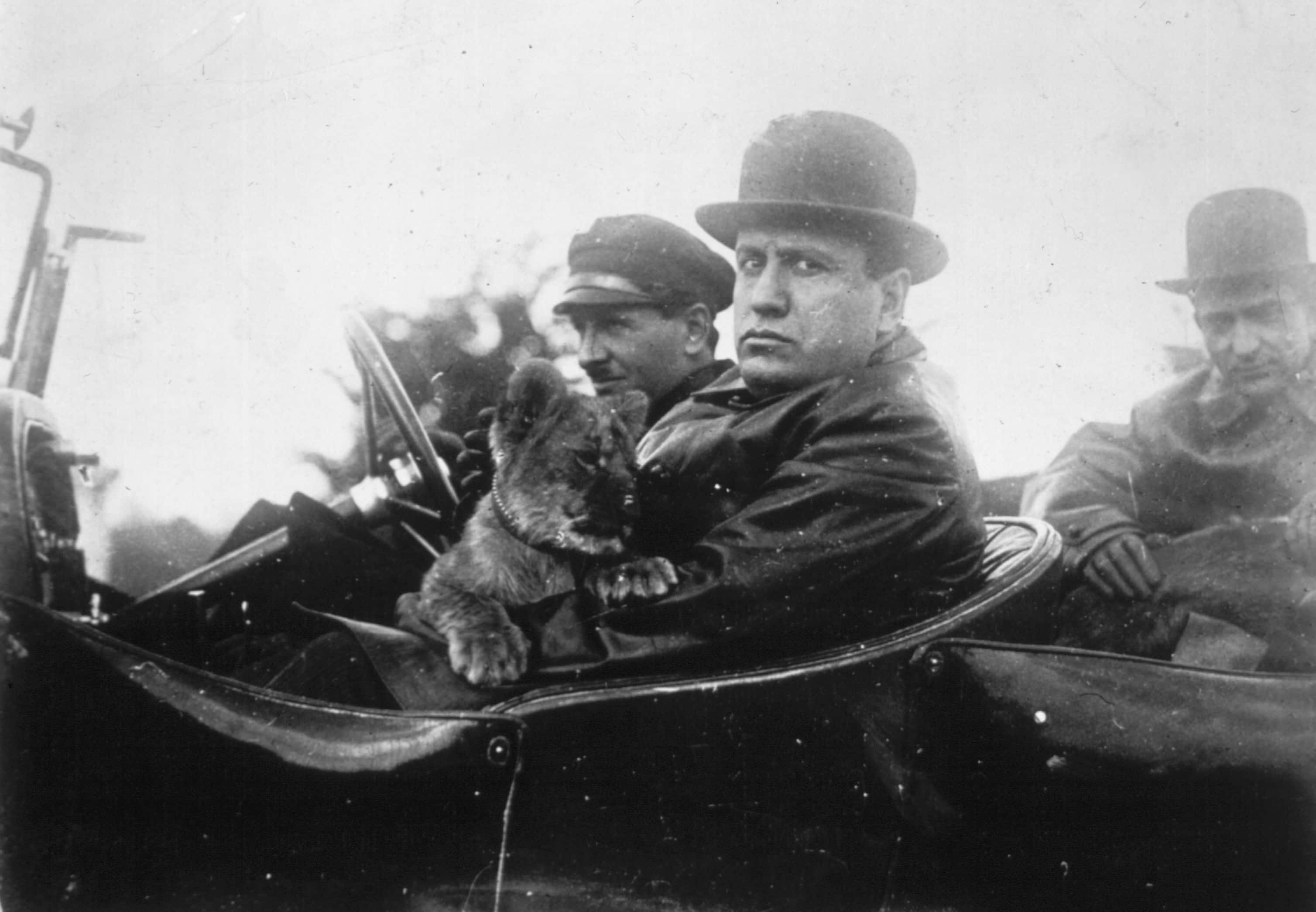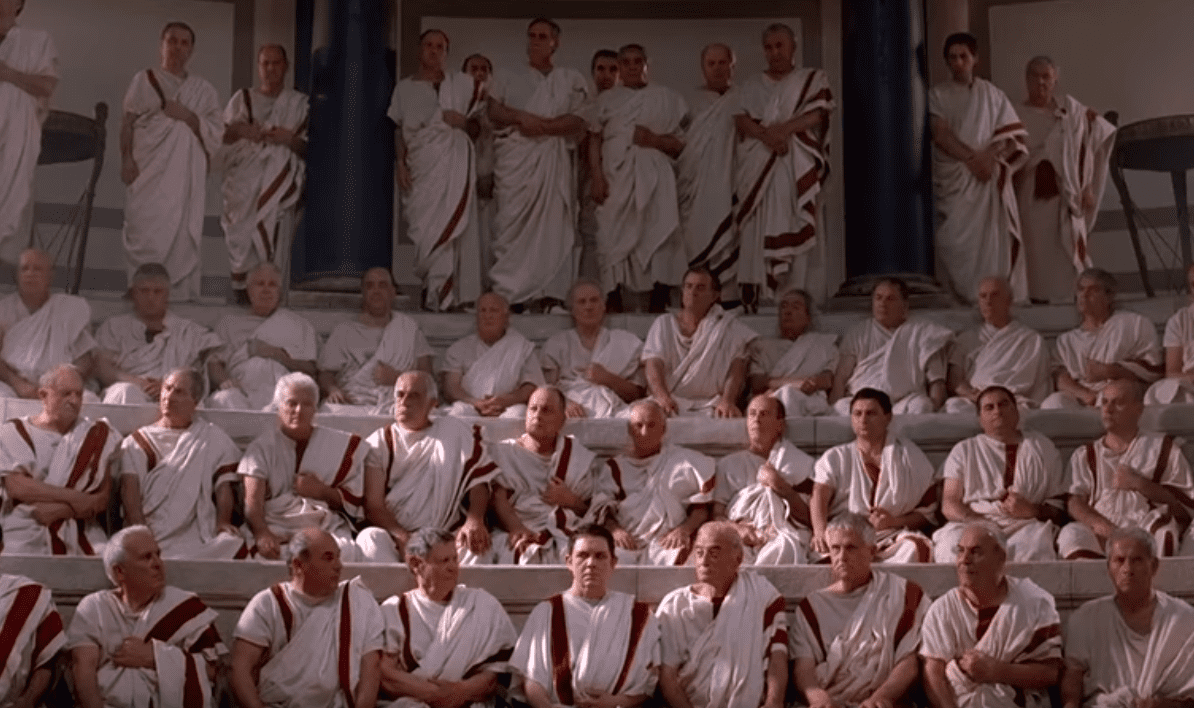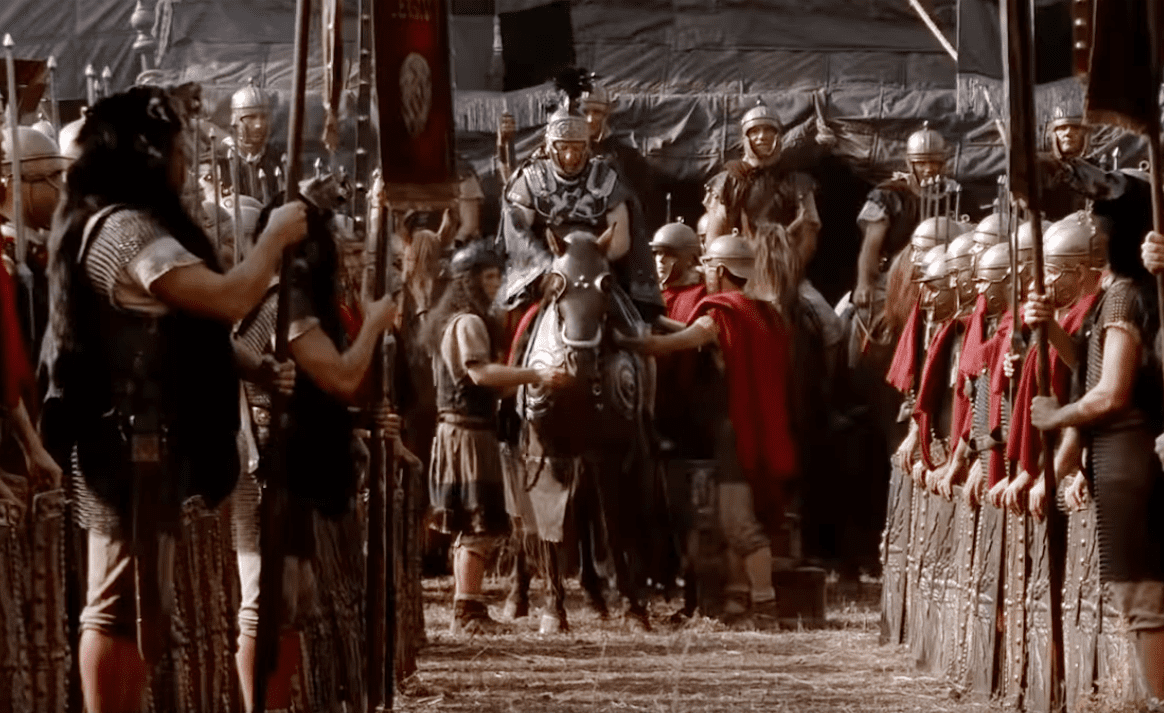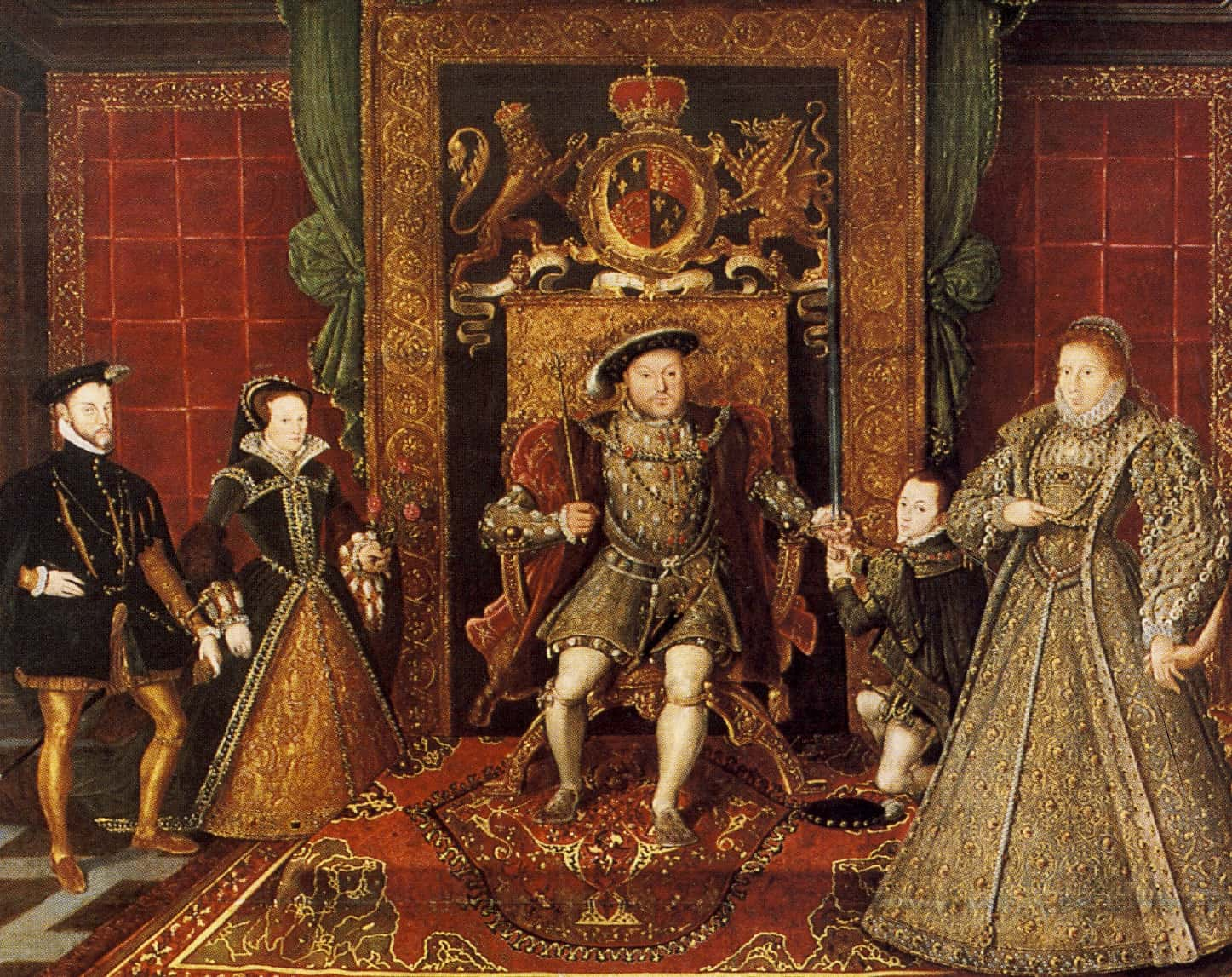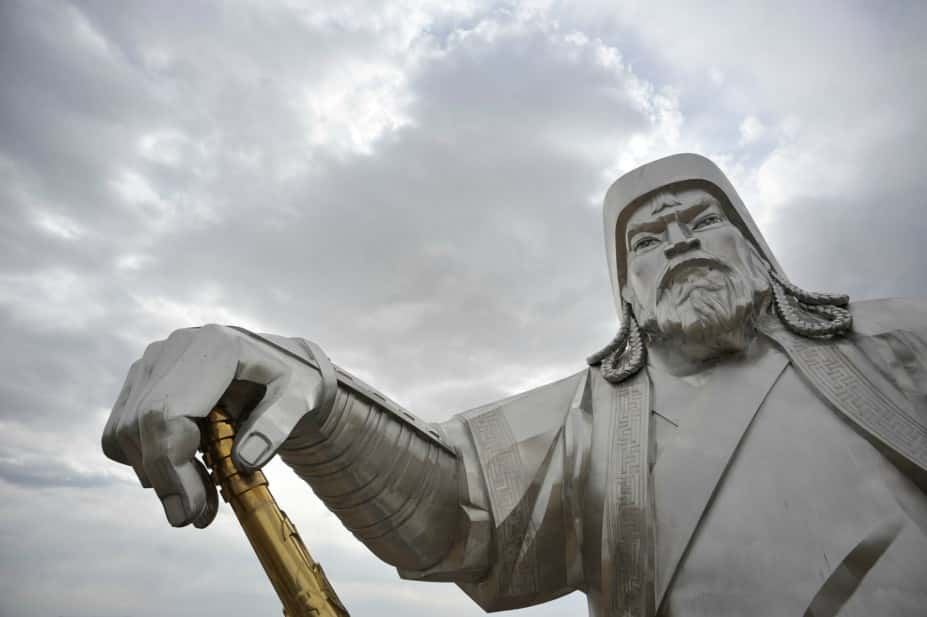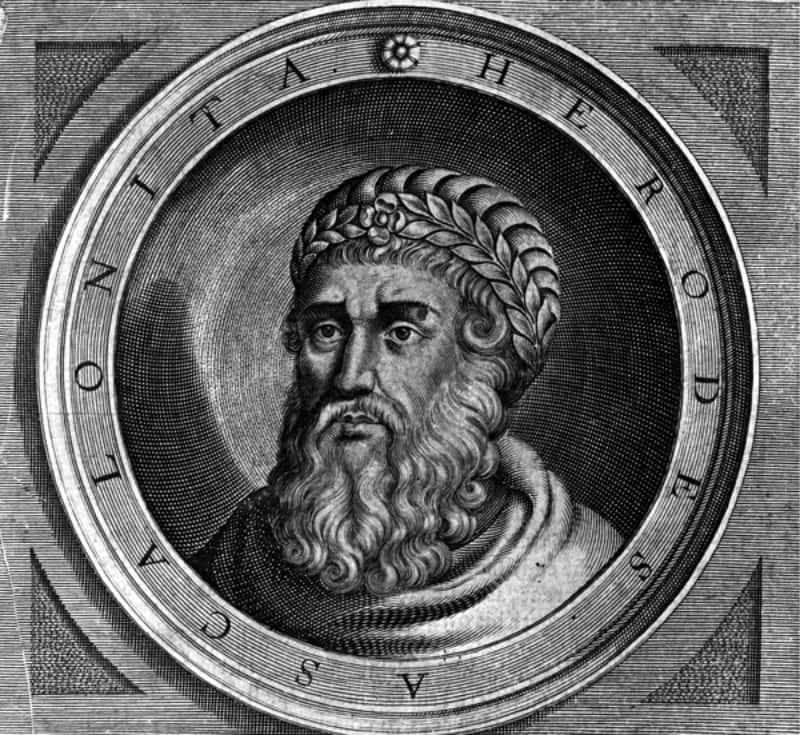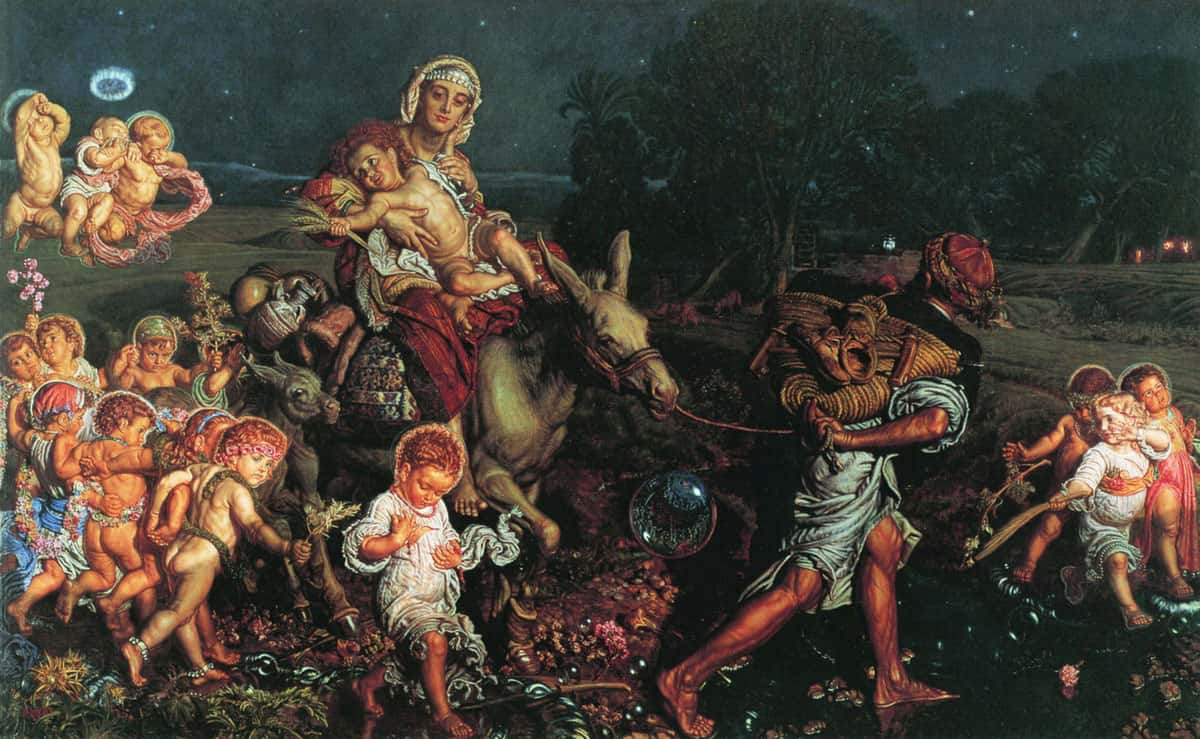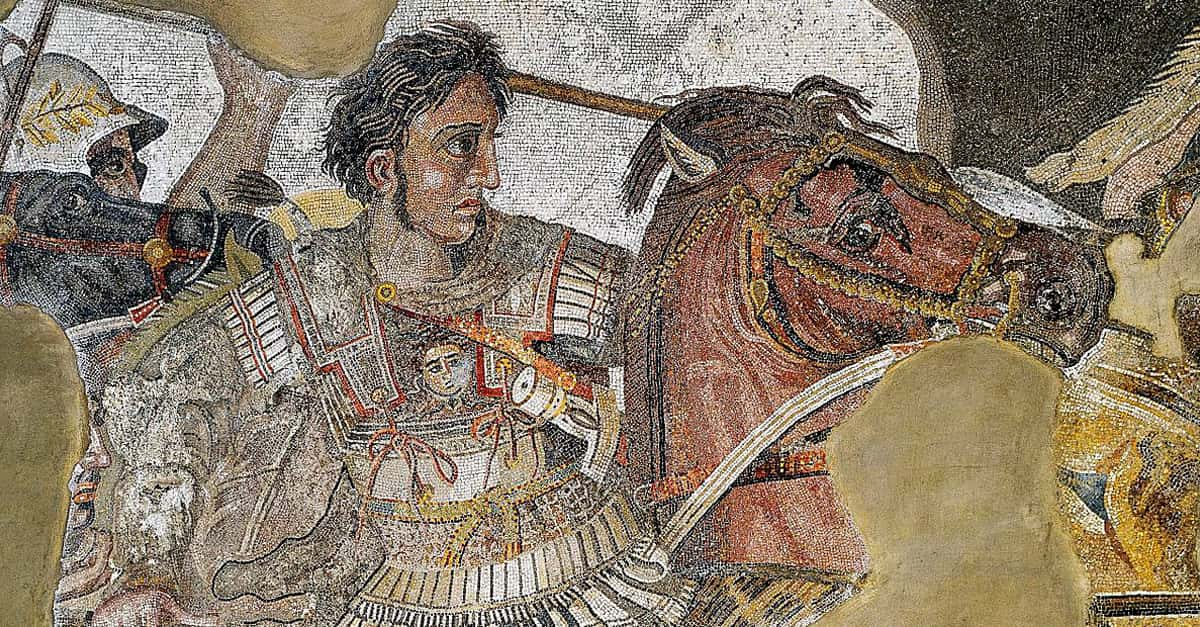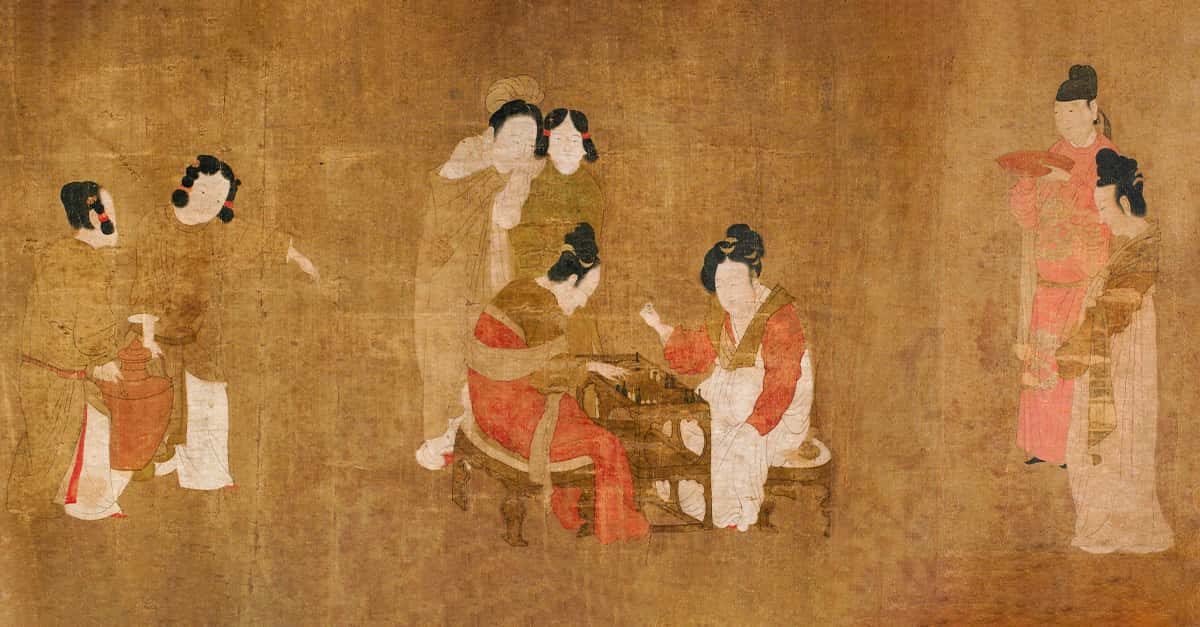Nobody likes a bully, but as history proves, there's hard to escape. Wherever there's a chance to snatch power, bullies and tyrants come out of the woodwork, hoping to get a piece for themselves at any cost. From rulers who persecuted their subjects to warriors who let no one stand in their way, history has its fair share of bullies—and none are worse than the ones here. Here are brutal facts about history's worst bullies and tyrants.
1. Always Playing the Victim Card, Those Puritans…
The biggest myth about the pilgrims was that they had to flee England to practice their Puritan religion safely. The truth was entirely the opposite situation! The English were actually too tolerant towards other forms of Christianity for the Puritans (keep in mind this was a time when Catholics were persecuted, and Jews had been banned from the entire nation of England for hundreds of years).
The Puritans were motivated to establish a new colony in the west so they could build a new settlement where they could persecute anyone who wasn’t their specific branch of religion.
2. Disrespectful Guests
One of the first things that the pilgrims did when they arrived in the deserted town of Plymouth was rob a nearby Aboriginal grave. Upon finding an ancient burial mound, they broke it apart to find many valuables, including seeds for corn.
3. Flat as a Pancake
One of Henry VIII’s more gruesome ways of executing people was a method called "pressing," which essentially is crushing someone to death. A large plank was held over the body of the prisoner, with weight being steadily added until they could no longer breathe. This was a long and drawn out way of killing someone, and weights were added slowly to ensure maximum suffering.
4. Tower of Skulls
If you think Genghis Khan was evil, you should have met his (possible) descendant Tamerlane the Great or Timur the Turkic conqueror. During his 40-year reign, he tried his hardest to emulate Khan, destroying cities, killing tens of thousands, and sending spies into the enemy camp to spread rumors about his vicious exploits.
In Baghdad, he is said to have beheaded 90,000 people and built towers out of their rotting skulls. Tamerlane also had a pretty good handle on the most brutal methods of torture, and he didn’t hesitate to skin people alive for not accepting Islam.
5. One Trick Murderer
The legend of Vlad the Impaler is rife with stories of his brutality, including his fondness for impaling the bodies of his enemies with blunt stakes. When it came to punishing crimes, he was essentially a one-trick pony. There were no degrees of punishment for Vlad. He just went straight for the impaling. He also had zero sympathy for the sick or the poor and burnt them alive in one of his castles.
If ever there was a time when flying under the radar was a good idea, it was during his reign.
6. Teen Tyrant
Murad IV, Sultan of the Ottoman Empire, was born during a particularly violent period for his kingdom. Being under perpetual attack can be stressful even for the most seasoned leader, but Murad took it all in stride and did as the Romans do, using the violence to his advantage. During his reign, he killed his siblings, banned smoking and coffee (making their use punishable by death), and made sure to hang or impale anyone who defied him—and that was just for starters.
He had his corrupt advisors strangled to death in his presence, executed a bunch of high ranking military officials, and he had the head of the Islamic Supreme court assassinated. All in all, he was one scary dude that you were better off not to mess with!
7. Prisoner’s Revenge
The members of the Liu Song dynasty really enjoyed killing people, and particularly members of their own family or the families of everyone else. Emperor Qianfei started out as his uncle’s prisoner and was constantly in fear of his own life until his father killed his uncle and freed him. If you think he was grateful for having his life spared, think again.
He hated his father so much, he ordered ugly noses be painted on all of his father’s portraits and undid all of his father’s laws in one fell swoop creating bedlam. He also inherited his family’s killing lust and killed pretty much his entire family, beginning with his brother. He did spare a few of his uncles, but they were caged and put on display.
Pretty soon he was killing anyone who looked at him sideways until he was killed by his attendants—to the complaint of nobody.
8. The King Who Shall Not Be Named
Seldom has there been a ruler so bad that no future ruler has ever taken the name, but King John, brother of Richard the Lionheart, was 100% that guy. While Richard was away on crusade, John was supposed to ‘babysit’ the kingdom, but he did far more than that. He had his nephew Arthur murdered to remove his most likely competition for the throne and then started a war with France, which he lost.
He might have been forgiven for trying to seize Richard’s power, but losing Normandy was not something the Barons could abide—not to mention the ridiculous demands for money and taking their wives. They tried to force him to accept Magna Carta, but John had zero honor and went back to war with France soon after signing it.
9. Caged Turk
The Ottoman Sultan Ibraham I was known as Ibraham the Mad, but you can’t really blame him for being kind of crazy—you would be too if you’d been locked in a windowless building from infancy and wondered daily if you were about to be murdered. Ibraham’s brother Sultan Murad IV had actually ordered his death thinking that insanity ran in the family—he might have been right—but their mother intervened and locked him up instead.
When he came out, he set out to make up for lost time and spent his rule indulging his whims, including some pretty kinky stuff with women. His entire reign was chaotic and insane until the Grand Mufti took revenge on him for spoiling his daughter by deposing him and tossing him back in the cage. One week later, he was executed.

Sign up to our newsletter.
History’s most fascinating stories and darkest secrets, delivered to your inbox daily. Making distraction rewarding since 2017.
10. I Only Love My Jewels and My Power, I'm Sorry
We’re probably all familiar with the Battle of Thermopylae thanks to the 300 film franchise. In both the films produced thus far, the villain of the story is the giant, heavily bejeweled Persian king known as Xerxes. He's often portrayed as a monstrous tyrant hell-bent on making the Greeks yet another race of people whom he enslaved.
11. By the Waters of Babylon
In 484 BC, Xerxes enraged the population of Babylon when he took a sacred statue of the god Bel and melted it down. To the Babylonians, this was a sacred statue with a long history, and Xerxes’s actions caused the Babylonians to revolt against him that same year and 482 BC.
12. How Many in Your Company?
According to Greek historian Herodotus, Xerxes’s army numbered one million troops. Of course, this number has been heavily disputed ever since. Some modern historians even estimate that Xerxes’s forces were as few as 60,000.
13. The Turn of the Tide
Xerxes eventually defeated Leonidas at Thermopylae and sacked the city of Athens (although it had been deserted by its population before the Persians arrived). From there, the Persian fleet engaged the combined Greek fleets at the straits near Salamis. Xerxes was so confident in his fleet that he ordered a throne set up in full view of the straits so he could get a front-row seat to the action.
We can only imagine the look on his face when the Persian fleet was annihilated!
14. And Don’t You Do That Again!
Xerxes allegedly had a very short fuse, and he wasn’t afraid to lose his temper when he got in the mood. The most famous example of such was when he was preparing to invade Greece by building a bridge of boats across the Hellespont (a narrow strait separating Turkey from Europe). When the ships were blown off course by a storm, the furious king blamed the sea for disrupting his plans.
As a result, he commanded the sea be given 300 lashes as punishment. While you may laugh at that kind of thinking, the next attempt to build the ship-bridge was successful!
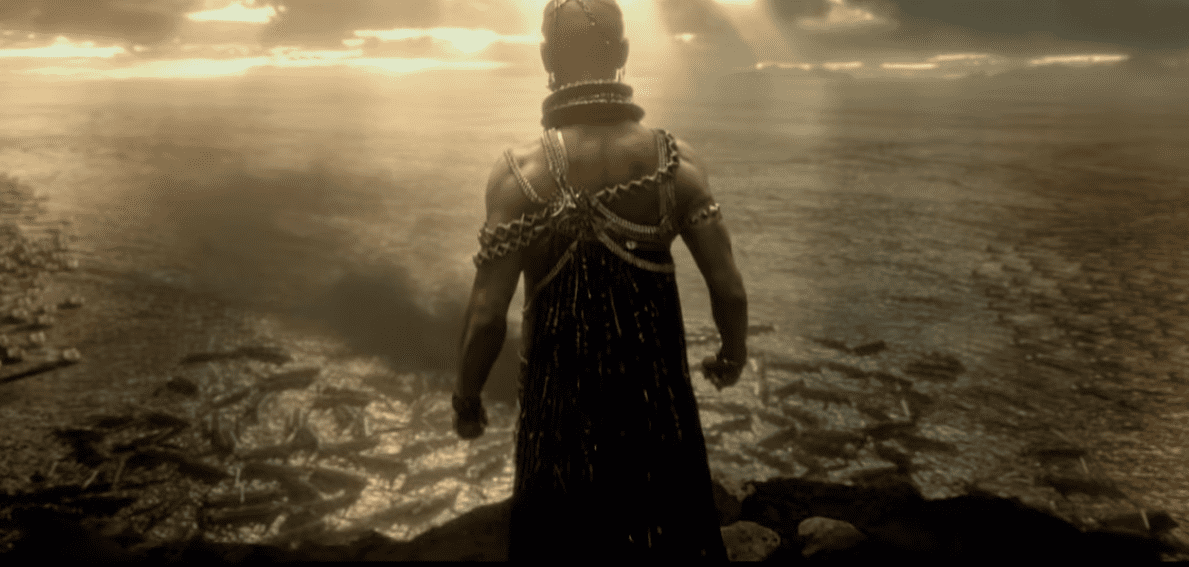 300: Rise of an Empire, Warner Bros.
300: Rise of an Empire, Warner Bros.
15. A Feud to Make Titus Andronicus Blush
Aside from his defeats in Greece, an alleged low point for Xerxes on a personal level was the problem concerning his affairs. A devoted womanizer, Xerxes began an affair with his niece, Artaynte. When Xerxes’s wife heard of the affair, she ordered Artaynte’s mother to be brutally mutilated in revenge (we’ll spare you the gruesome details).
When Xerxes’s brother understandably went on the warpath, Xerxes killed said brother, his nephews, and every man who rallied to their cause. Of course, we have to remember that the source for this story was the Greek Herodotus, whose histories have to be taken with a few grains of salt.
16. Raging Rudy
The Roman Emperor Rudolph II was a pretty awful ruler whose claim to fame was destroying the religious settlement that had kept German Catholics and Protestants from killing each other, and for crusading through Germany in an effort to wipe out Protestantism. That plan didn’t end up working so well. The Protestants formed a self-defense league, the Hungarians revolted against it, and the Turks went on the offensive.
And what did Rudolph do during all of this? He shut himself up in Prague castle and wouldn’t talk to anyone. The Hapsburgs finally agreed to replace Rudolph with his brother Mathias, and peace was restored, and treaties signed. That is until Rudolph went into a rage and started riled up the Turks all over again. Less than six years later, the thirty-year war began, tearing Europe apart. Great job Rudy!
17. Ruthless Ranavalona
While the rest of the world was adopting European colonialism, Ranavalona I of Madagascar adopted a nationalist attitude and kept her country free from British rule by being so ruthless that she managed to cut the country’s population in half. Instead of collecting taxes, she forced imposed periods of forced labor on her subjects.
She also didn’t really care who died giving her what she wanted, and once she demanded that a road be built before her eyes for her and her hunting party. An estimated 10,000 subjects died building it, but it was what she demanded. Not surprisingly, there were several plots to kill her and at least one attempt at a coup, but this only drove her into deeper paranoia.
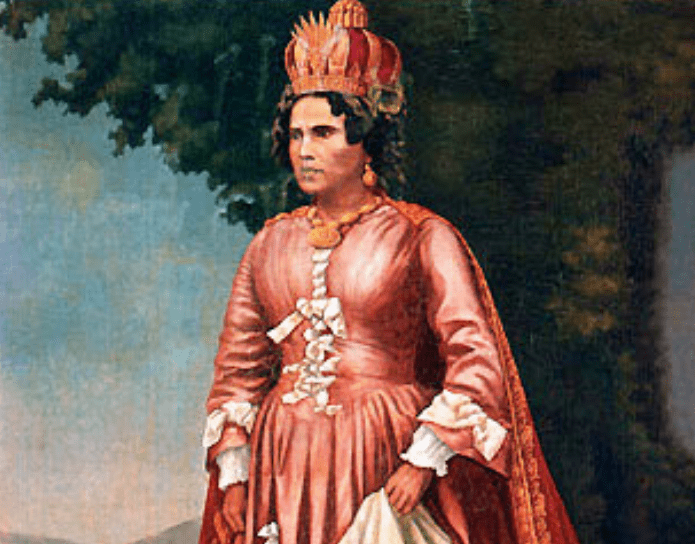 Wikimedia Commons Philippe-Auguste Ramanankirahina
Wikimedia Commons Philippe-Auguste Ramanankirahina
18. Museum of Mummies
Ferdinand I of Naples was said to have a lot of political sense and was extremely brave, but when it came to governing, he was brutal and inept. His method of governance was by oppression, which led to a revolt amongst the nobility. He had zero compassion for his defeated enemies, and after falsely promising them amnesty, he had them murdered instead.
After their murders, he would have them mummified and added to his museum of mummies dressed in their clothes. If he thought anyone was plotting against him, he’d simply take them on a casual tour of the museum, which was totally morbid, but effective!
19. Obsession
Henry VIII was consumed by his desire to father a son—something that proved famously difficult for him. Catherine of Aragon bore Henry six children, including two sons, but all but one of those children—the future Queen Mary—died in infancy. Henry VIII was desperate for a male heir to secure the royal lineage, and Catherine's early "failure" to do so left Henry in a precarious position.
Henry's plan? Do anything in his power to get rid of Catherine and wed his mistress, Anne Boleyn.
20. Head on a Spike
In 1532, Elizabeth Barton, a Catholic nun known as “The Nun of Kent” and “The Holy Maid of London,” began prophesying that Henry VIII's marriage to Anne Boleyn would result in his death. In 1533, she was arrested and forced to admit that she’d made everything up. She was executed for treason and hanged. Her head was placed on a spike on London Bridge; she was the only woman to ever be given that "honor."
21. Goodbye and Yellow!
According the Imperial Ambassador Eustace Chapuys, Henry “honored” the death of his ex-wife, to whom he was married for over 20 years, by dressing head-to-toe in yellow silks and declaring, “God be praised that we are free from all suspicion of war!” since the divorce had put him at odds with her nephew, Emperor Charles of Spain.
Some people have tried to suggest that yellow is the Spanish color for mourning, but the verdict is still up in the air.
22. Mock Trial
No fewer than seven men were accused of carrying out affairs with Anne Boleyn, among them the poet Sir Thomas Wyatt, Henry’s friend Henry Norris, and Anne’s own brother, George. Virtually all denied the allegations or confessed under torture. Those coerced confessions were enough to have Anne condemned to death for adultery, treason, and incest.
Modern historians agree that the charges brought against Anne Boleyn that led to her execution were false and unconvincing and that Henry had her killed just because she didn’t happen to have any male children.
 Getty Images
Getty Images
23. Third Time's the Charm?
King Henry was not a man to waste time. Within 24 hours of Anne Boleyn’s execution, Henry was already engaged to his mistress, Jane Seymour. Seymour eventually gave him his long-desired son, Edward VI, but she died two weeks after giving birth. She was the only of Henry’s six wives to be buried with him, and Henry considered her his first "true wife."
24. Which One?
King Henry VIII was a pretty heartless bugger, and as much as people have romanticized his great love for Jane, having a son and heir was always his number one priority. Jane’s labor was difficult, and when asked by a female attendant whether he wanted to save the mother or child if it came down to it, he supposedly replied “If you cannot save both, at least let the child live," followed by the characteristic statement "for other wives are easily found.”
Priorities, right?
25. Renaissance Tinder
After Seymour's death from complications of after giving birth to Edward VI, Henry VIII began the search for his next wife. In order to choose, Henry was sent paintings of possible partners. He chose Anne of Cleves over her sister Amalia, but was unhappy with his choice when he finally saw her in person.
He called her a “fat, Flanders mare,” and had the marriage annulled after just six months. At least she kept her head!
26. Off with Her Head!
Sixteen days after annulling his marriage to Anne of Cleves, Henry VIII (now 49) married the 19-year-old Catherine Howard, who had been Anne of Cleves' lady-in-waiting. Less than a year into their marriage, rumors of her infidelity began, and after gathering evidence of her promiscuity, Henry had her executed in 1542.
 Wikipedia
Wikipedia
27. Worst Monarch in History
England has had some terrible monarchs in its time, but according to history writers, Henry VIII deserves the title of "worst monarch in history." Henry VIII took 20% of the vote for "worst monarch" in a survey by the Historical Writers Association, who polled 60 authors.
28. Body Count
Henry executed somewhere between 57,000 and 72,000 people during his reign, and of course, ordered the execution of not one but two of his very own wives.
29. Corrupt Gladiator
Emperor Commodus of Rome was not particularly beloved by his people. During his reign, Rome fell into a pretty bad state. While he was busy indulging in the things he liked to do like fighting as a gladiator he left the political stuff to others. He was said to not only be vain, but to believe himself to be Hercules reincarnated, ordering statues of himself to be dressed like the god and to be addressed as Hercules.
As if this weren’t bad enough, while he played nice inside the public arena, in his private fights he wasn’t so nice. He ordered wounded soldiers and ordinary cripples into the arena to be slain, and he slaughtered exotic animals—much to the horror of the Romans. Predictably, his outlandish behavior was too brutal even for Rome, and he was eventually assassinated.
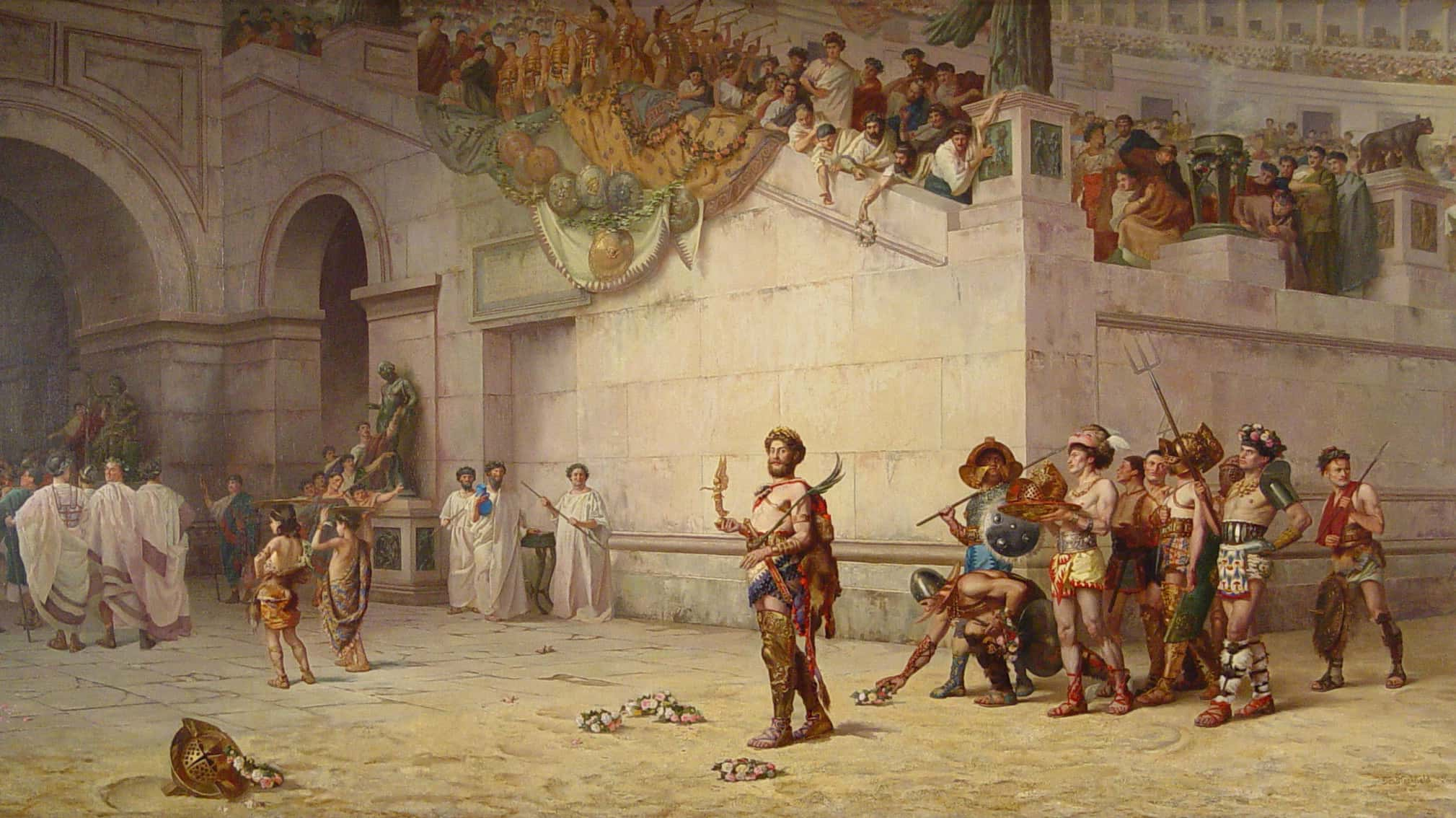 Rome Across Europe
Rome Across Europe
30. Wandering Soul
The 16th-century Swedish ruler Eric XIV was initially thought to be quite competent, but then his paranoia took over, and everything went downhill from there. First he arrested his own brother and tried him for treason. Next, he sentenced a prominent Swedish family to death for treason without cause and killed one of the family members himself.
When he was done, he disappeared into the woods and was found four days later dressed as a peasant. The nobles might have overlooked his bizarre wanderings, but they couldn’t tolerate murdering the Sture family, and they rebelled and dethroned him.
31. First and Last
In China’s history, there has only been one woman to rule China by herself and that woman was the sadistic murderess Wu Zetian. During her reign, she had all of her rivals executed, including the former empress Wang, as well as members of her own family, including her newborn daughter. She frequently ordered executions and suicides and drove others into exile.
Throughout her reign she maintained power by poisoning, mutilating, strangling, and burning or boiling her subjects alive. For as long as she was into it, her reforms did quite a lot of good for China, but as she got older, she spent less time ruling and more time with her young lovers, ultimately becoming addicted to aphrodisiacs. Finally, her officials could no longer ignore her behavior and they had her lovers murdered. Zetian herself was exiled.
32. New Record
King William III was the last English King who won his crown by force. This is likely a record which he will keep for the rest of history—unless Prince Harry mounts a coup against his brother William in ten or twelve years.
33. Move Over, Khaleesi
The army which William led to invade England consisted of “250 carrier ships and 60 fishing boats [carrying] 35,000 men, including 11,000 foot and 4,000 horse soldiers.” However, William’s wife Mary was not part of the Armada. This was understandable since the crown that William was trying to take was her father's. She stayed behind in the Netherlands and did not come to England until the following year.
34. Successful Conquest
Mary's father, King James II of England, saw the writing on the wall after an initial attempt at resistance. Many English nobles immediately declared their support for William, and even more officers in the army defected to his side. James II tried to flee but was brought back to London to face William when he arrived.
However, William had no intention of making James a martyr; he actually wanted James to voluntarily leave England, which would look a lot better from a PR perspective than if he executed or banished James himself. James took the opportunity to leave, living in France for the rest of his life. He and his family would continue to provoke trouble in Great Britain, particularly in Scotland, with the Jacobite risings which occurred in 1689, 1715, 1719, and 1745.
35. Butcher of Belgium
King Leopold of Belgium of Tarzan fame is best known for creating the Congo Free State, which was a project to extract rubber and ivory from the Congo region in Africa. Under the pretense of missionary work, for two decades, he enslaved the people of the Congo killing and persecuting between 8 and 12 million people in the late 1800s.
Thanks to his exploitation of the Congolese people, he was at one time believed to be the richest man in the world with a personal fortune between $100 and $500 million.
36. How About an Alliance?
Boudicca was a Celtic queen of the Iceni tribe (from Norfolk and north-west Suffolk in modern-day England) who led an uprising against the occupying Roman Empire around 60/61 AD when their lands were taken by the Romans and they were no longer treated as allies. She was eventually defeated in the Battle of Watling Street, but not before causing catastrophic damage to the towns of Camulodunum (Colchester today), Verulamium (St. Albans) and Londinium (take a guess).
37. She’s Kind of Scary!
Based on descriptions of Boudicca by ancient historians, she was a pretty terrifying figure. She was described as being of above-average height, having a “piercing gaze,” waist-length fire-red hair, a harsh voice, and possessing a “greater intelligence than often belongs to women. "OK, not the greatest compliment, but from an ancient historian, that was about as good as it gets for a woman.
In other words, you wouldn’t want to mess with her!
38. Using Her Smarts
According to some historians, the main reason that Boudicca was able to accomplish as much as she did was her keen intelligence. I’m sure that this wasn’t the only reason, but could an idiot have rallied and led an army well enough to level three Roman cities and kill 80,000 Romans? Probably not!
39. Sending a Message
In his accounting of the battle of Londinium, Dio describes a brutal scene that would have definitely raised a few eyebrows. Boudicca supposedly hung up the noblewomen like animals, sliced off their breasts and sewed them to their mouths. When they were done with this crude scene, they supposedly skewered them like meat on a stick.
40. Blue-Man Group
Celtic warriors were described as being tall and muscular, and at least a head above their Roman enemies. This alone would have made them look pretty imposing, but they also loved grandstanding, and would often paint themselves with a blue die to look even more scary. The showboating didn’t stop the Romans, but you’ve got to give them points for style!
41. Only Survivor
Isabella, the “She-Wolf” of France and the future Queen of England, was born between May and November 1295 to Philip IV, King of France and his wife, Joan I of Navarre. When she was approximately three years old, her parents arranged for her to become engaged to the future King Edward II of England, and they were eventually married in 1308.
Known for her beauty, intelligence, and diplomacy, she was most famous for her role in having her own husband dethroned.
42. The King’s Favorite
The marriage between Edward and Isabella never stood a chance, because Edward was already in love with someone else. Edward met Piers Gaveston when they were just teenagers, and it was supposedly love at first sight. Edward’s father had some idea of what was going on and banished Gaveston from England. His banishment was short-lived, and the moment Edward I died, the new king sent for his lover, making him the Earl of Cornwall and marrying him to his niece.
43. She’ll Come Back if She Wants To
Isabella was initially sent to France to negotiate peace with her brother King Charles IV after he seized all of Edward’s French possessions, but that wasn’t all she did while she was there. By this point, many of his nobles were fed up with Edward, and she was none too thrilled with him either. She used her time in France to amass an army to oppose Edward, completely enraging him.
He tried to demand that she return to England, but this is where having a king for a brother comes in handy. He told Edward that Isabella had arrived in France of her own free will, and she’d only return to England if and when she felt like it, because he had no intention of kicking her out.
 Braveheart, Icon Entertainment International
Braveheart, Icon Entertainment International
44. Not Much of a Fight
The battle against Edward II turned out not to be much of a battle. Edward’s allies immediately deserted him without a fight, the Despensers got killed in the invasion, and Edward was captured and forced to abdicate in favor of his son.
45. Getting Greedy
It turned out that Isabella was utterly ruthless, and public support for her and her lover, Roger Mortimer, quickly dwindled when it became apparent that they were no better than Edward and his Despensers. They were seizing land from their enemies left, right, and center, and instead of redistributing them, kept the land and wealth for themselves.
Between Edward II’s mysterious death and the unpopular Treaty of Northampton, the nobility and even Isabella’s son turned on the pair, and Edward III had Mortimer executed.
46. Big Mistake
Making an enemy of Isabella was never a good idea, as Margaret Badlesmere learned after denying her entry to Leeds Castle. She had no good reason, other than just disliking Isabella for refusing to use her influence to get one of her friends a position in the Exchequer Office. In an act of petty retaliation, she not only refused to let her in, but had her archers shoot at her when she tried to enter by force.
Isabella had Margaret arrested, making her the first woman to be imprisoned in the Tower of London for her actions.
 Wikimedia Commons, allen watkin
Wikimedia Commons, allen watkin
47. Merging Two Figures
The first description of Isabella as a “She-Wolf” was by the 18th-century poet Thomas Gray in his poem “The Bard.” His poem combined Christopher Marlowe’s depiction of the French Queen with Shakespeare’s portrayal Margaret of Anjou as the she-wolf of France in his historical plays. As befitting of a wolf, he describes her as “ripping open her husband’s bowels with her unrelenting fangs.” Brutal!
48. Fact or Fiction
Caligula, born Gaius Julius Caesar Augustus Germanicus in 31 AD, was the Emperor of Rome between 37 and 41 AD. Known throughout history as a cruel and erratic ruler, he's perhaps most famous today for his (largely fictional) portrayal in the infamous 1979 erotic film Caligula. The movie strays quite far from the truth, but that doesn't mean that the actual Emperor Caligula was not seriously fascinating, often in strange and disturbing ways.
49. Sisterly Love
According to the historian Suetonius, Caligula had incestuous relationships with all three of his sisters. He was greatly interested in the Egyptian practice of using incest to protect the royal bloodline and decided to do the same himself. However, Suetonius' The Twelve Caesars was written 80 years after Caligula's assassination, and since earlier chronicles never mention Caligula's incestuous behavior, it may be an exaggeration on Suetonius' part.
That does sound more like the Caligula from the movie at least.
50. Distinguished Line
Caligula was descended from a prominent line of Roman leaders. Julius Caesar was his great-great-grandfather, Augustus was his grandfather, and his father Germanicus was one of Rome's most popular generals.
51. Living God
While Caligula was still alive, he had a temple built for himself and placed a life-sized golden statue in his own image inside. Each day, he had the statue dressed in whatever he was wearing, and Rome’s wealthiest citizens would make offerings to the emperor there. Gifts included flamingoes, peacocks, and other exotic animals that were greatly admired by the Romans.
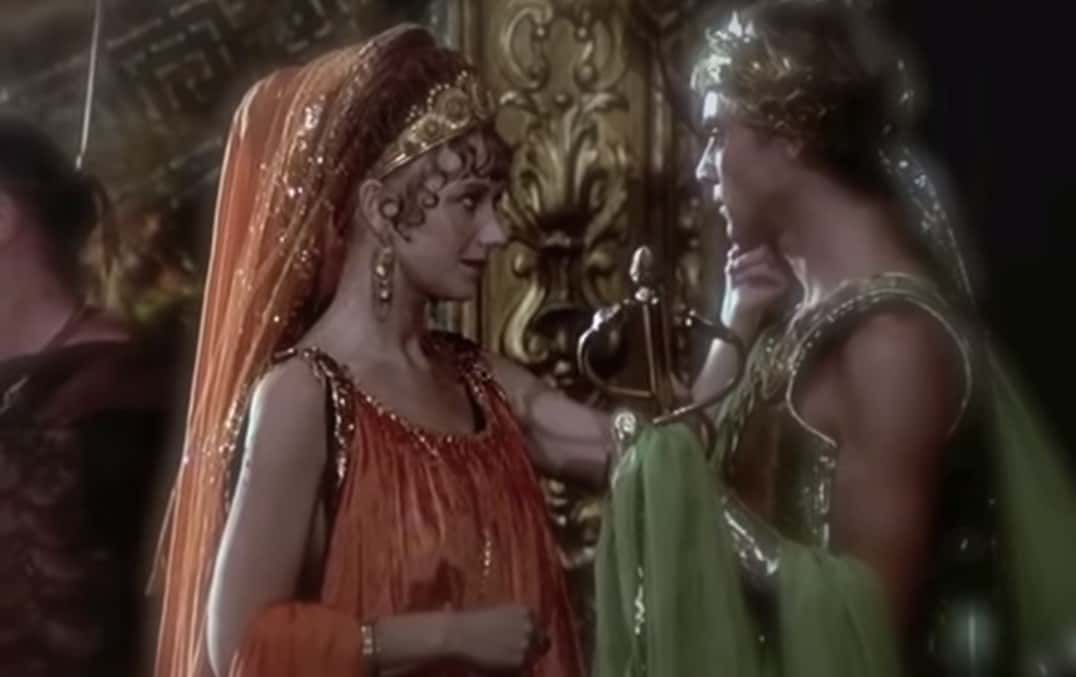 Caligula, Penthouse Films International
Caligula, Penthouse Films International
52. Of Little Worth
In the various writings about Caligula, nearly all historians agree that he placed very little value on human life. In one story, he was supposedly meant to make a sacrifice to the gods by hitting a bull over the head with a mallet, but at the last minute, turned and hit the priest instead. He then apparently laughed at the priest as he was dying.
53. There's Nothing in the Rulebook That Says A Horse Can't Be Consul
When it came to his treatment of humans, Caligula was known for his cruelty, but there was one creature he revered: He loved his horse Incitatus so much that he gave him his own house with a marble stall and manger made from ivory. Caligula had planned to make the horse a consul as an expression of his total power, but died before he had the opportunity.
54. Nursing a Viper
Even before he was Emperor, Caligula had an innate viciousness. He enjoyed watching torture and executions, and indulged in scandalous behavior at night. As he became more unhinged, Tiberius commented “I am nursing a viper in Rome's bosom…I am educating a Phaethon who will mishandle the fiery sun-chariot and scorch the whole world."
55. Public Humiliation
About halfway through his reign, Caligula seemed to break with the senate, and used every opportunity to humiliate them. According to historians, around 39 AD, he removed and replaced all of the Consuls without asking the Senate’s approval. It's also said that he would force senators to run alongside his chariot dressed in their full robes. Real mature.
56. Death on a Whim
The gladiatorial games were not only for public exhibition and political reputation, but also to serve up Roman justice. Criminals and slaves were often sacrificed for entertainment and in the case of Caligula, even members of the crowd were at risk. In one instance, he supposedly ordered that an entire section of the crowd be given to the beasts to make up for a shortage of criminals that day.
57. Disturbing Joke
Caligula had a malevolent sense of humor. Once at a dinner party, he reportedly burst into raucous laughter. When asked to explain the reason for his mirth, he replied, “I’ve just thought that I’ve only to give the word and you’ll all have your throats cut.” Hilarious, right?!
58. Planning His Death
Caligula was so hated by the Roman people at the end of his reign that the citizens began to demand that he be removed from power. A sinister plot developed within the senate to assassinate Caligula, and on January 24, 41 AD, Cassius Chaerea slashed his throat from behind, followed by a blow to the chest from Cornelius Sabinus.
The blow caused Caligula to fall to the ground, where the remaining conspirators stabbed him 30 times.
59. First Assassination
The murder of Caligula marked the first time that a Roman Emperor was assassinated. He was stabbed 30 times by the Praetorian guards at the Palatine Games. His wife and daughter were also executed.
60. Erased From History
By the time Caligula died, he was so hated that the Senate pushed to have him completely erased from Roman history. They ordered the destruction of his statues and public inscriptions, and his coins were pulled from circulation and melted down whenever possible.
61. Did He Also have to Call Himself Reek?
The Assyrians were one of the earliest warlike conquerors in human history, and one of their fiercest kings was Ashurbanipal. He was well known for his cruelty towards any enemies that tried to fight the Assyrians, such as when he defeated an Arab king, took him prisoner, and made him live in a dog kennel. To make it extra freaky, the former king was chained to the kennel by his freaking jaw!
62. Gracious in Victory?
Ashurbanipal took issue with the nation of Elam attacking Assyrian territory, and he struck back hard. Elam’s King Teumman fought back, but when his Elamite forces were defeated at the Ulaya river, he took his own life to avoid capture. Ashurbanipal then made an utterly chilling gesture: he supposedly took Teumman’s head and showed it to the Elamite ambassadors in Niniveh.
One of them was said to have torn his beard at the sight, while another proceeded to take his own life as well. Teumman’s head became a decoration in Niniveh’s harbor, while the story of his death and humiliation were frequently portrayed in Ashurbanipal’s palace.
63. Nobody Tells Me What to Do!
Most conquerors justify their actions by acting in the name of their country’s glory and benefit. However, some have to go above the law of their own country to make such conquests. Spanish conquistador Hernan Cortes heard about the wealth of the area now known as Mexico and urged Hispaniola Governor Velasquez for a command to get some of that wealth for Spain.
However, Velazquez got cold feet and called off Cortes’s charge. Cortes ignored the counter-command and set off with his expedition, changing history just because he felt like it.
64. Rebound Remorse
A year after his first wife had died, Ivan the Terrible married Maria Temryukovna, who was only seventeen and perceived as illiterate. Ivan, however, was stricken by Maria's great beauty. The marriage was one of his least successful. Not only did their only child die young—continuing a grisly trend when it came to Ivan’s offspring—but Maria was unpopular and unable to adjust to life in Moscow.
Upon her death in 1568, rumors abounded that Ivan had poisoned her, though it’s recorded that he went on a witch hunt to find out the true cause of her death, so the truth will never be known.
65. That Was Us?!
In 1347, a city in Crimea owned by the Genoese named Kaffa was under siege by the Mongolian Golden Horde, one of the world's most fearsome conquering groups. During the siege, several of the Horde’s forces began dying of a foul disease. Seeking to use this as an advantage, the Mongols began using a foul strategy: they catapulted the diseased bodies of the dead into the city.
Many scholars believe that this was how the Black Death first came to Europe, as the Genoese brought the disease with them when they fled Kaffa and headed west for havens such as Sicily. This means that the Mongols, between the Black Death and their regular conquering, have maybe the highest death count of any civilization in world history.
66. The Orphaned Duchessia
It’s wrong to cast Catherine de Medici (b. 1519-d. 1589) as just a Machiavellian matriarch whose ambition eclipsed her children’s happiness… but it’s equally wrong to paint her as a passive pawn of circumstance. Scandal followed Catherine throughout her tumultuous life, and it’s clear she took an active role to survive and thrive in the deadly courts of Renaissance Europe.
67. Close Enough!
In July 1556, Catherine had Nostradamus draw horoscopes for her children. He predicted that each of her sons would be kings, but she would outlive them all. This turned out to the almost true: only three of her five sons became King of France and she outlived all but two of her children. Close but no cigar.
68. Our Lady of Vindication
Catherine was cordial to her husband’s mistress… during his lifetime. As Henri lay dying from a jousting accident, her true feelings revealed themselves. Catherine denied Diane de Poitiers any access to Henri’s deathbed, ignoring her husband’s final pleas for his lover. After his death, she banished Poitiers and her friends from Paris.
She also ordered the surrender of Poitiers’s crown jewels and her fine castle, the Château de Chenonceau. Even years later, Catherine made her real opinion heard on Poitiers in a letter to one of her children which read, “Never has a woman who loved her husband liked his whore.”
69. Holding It Over Him
In 1560, it was clear to Catherine that her son Francis II would die soon. Eager to secure power over her next son, the nine-year-old future Charles IX, Catherine made a deal with Antoine de Bourbon, who was next in line for the little king’s regency: surrender his right to the governorship and she would let his brother, Condé, out of prison.
70. Mommy Massacre
The Bartholomew’s Day Massacre is arguably the largest stain on Catherine’s reputation. It was publicized as Crown-sanctioned revenge against Protestants in Paris for the August 1572 attempted murder of Admiral Coligny. However, the violence against Huguenots (and simple bystanders) snowballed for a week in the city, spreading out into the French countryside where it persisted, purge-like, well into the autumn months.
Catherine’s culpability is still debated; historians suggest she might have only intended to take out the leaders and the rest is chaotic history. Still, not too many people who have a massacre connected to their name are completely innocent.
 continuing counter reformation
continuing counter reformation
71. Whispers of the Devil
Catherine’s superstitious nature and dark reputation lent themselves to the rumor that she invented the Black Mass, a Satanic send-up of the traditional Catholic Mass. Of course, there's very little to prove this outside of a scandalous book by Jean Bodin.
72. Mother’s Mercy (Is Non-Existent)
When it came to her youngest surviving daughter, Marguerite, she and Catherine had a complicated relationship. This was made harder by Marguerite’s tendency to cheat on her husband. In October 1586, on Catherine’s utterly brutal orders, Marguerite’s husband imprisoned his wife and executed her lover… although not right in front of Marguerite, as Catherine had wanted.
Small victories, I guess...
 pinterest
pinterest
73. The Tyrant Emperor
Julius Caesar is perhaps the most famous Roman ruler in history, and his brutal assassination at the age of 55 lives in infamy—yet few people know his even darker history. The brilliant Caesar quickly rose from the rank of Army general to the dictator of all Rome, and he lived a fascinating life full of conquest, lust, and betrayal.
74. Child's Play
Caesar's infamous arrogance reared its ugly head when his rival Sulla ended up resigning as dictator. After Sulla bowed out, Caesar mocked him ruthlessly by saying, "Sulla did not know his political ABCs."
75. Once, Twice, Three Times a Dictator
Though we now think of Caesar's death as a hateful crime, that doesn't mean he didn't deserve it. Few people remember that Caesar was a true dictator of the Roman Republic. In fact, he even earned the title "dictator for life" a month before his death, which gave him enormous power and secured his iron grip on Rome. What were his enemies to do but kill him?
76. The GOAT
It's no wonder that Caesar was famous for his way with words. He's the one who came up with the classic line "Veni, Vidi, Vici," or "I came, I saw, I conquered." Caesar sent the iconic words in a letter to the Senate, boasting about his quick and brutal victory against the King of Pontus. This guy sure knew how to be his own hype man.
77. Greatest Form of Flattery
Caesar was an inspiration to several historical tyrants. Italy’s Benito Mussolini saw himself as a new Caesar and actively imitated the ways of the Roman Empire.
78. Your Time Has Come
On March 15th in 44 BC, Caesar finally met his horrific fate. He had an appointment to appear at the Senate, and a group of conspirators were lying in wait to kill their ruler. When they started attacking him, Caesar tried to flee, but, blinded by his own blood, he tripped and fell on the steps. A group of around 60 men quickly mobbed the dictator of Rome.
79. Dude, Where's My Audience?
After killing Caesar, the conspirators ran out into the streets screaming, "People of Rome, we are once again free!" They were met with crushing silence. The people had already fled into the safety of their houses.
80. I'm Gonna Go With...Nah
Everyone knows Caesar crossed the Rubicon river, but few people understand just how much of a legendary "screw you guys" move it was. At the time, Rome was super uncomfortable with how much power the young Caesar was gaining, and they ordered him to disband his army and to definitely, definitely not cross the Rubicon into Italy with his men in tow.
Well, what do you think he did? He crossed the heck out of that river with a buttload of soldiers. It was an act of war that eventually won him the dictatorship of Rome, but Caesar was pretty chill about it at the time. After he did it, he reportedly tossed out the now-iconic one-liner: "alea iacta est," or "the die is cast."
81. You’re Gonna Need More Booty, Mates
During one of his return trips home from ransacking and pillaging, pirates hijacked Caesar’s ship and ransomed him for 20 silver pieces. Instead of cowering, Caesar made sure they would live to regret their mistake. First, he befriended the kidnappers and persuaded them to double their ransom, since wasn't he worth more than that? But he wasn't done yet.
Once his uncle paid the ransom and Caesar was free, he enacted his ingenious plot. He took a fleet of men, chased down the pirates, and slit all their throats. What’s the moral here? Know who you’re kidnapping, folks.
82. A Tithe of Troubles
Although she only reigned for five years, Mary Tudor was a busy queen. As she attempted to reverse the Protestant reforms started by her father Henry VIII, Mary had over 280 dissenters of the Catholic Church burned at the stake in what was known as the Marian persecutions. When Mary was only a child, Henry had used Protestantism to divorce Mary's mother.
It's likely this only fueled Mary's staunch devotion to Catholicism.
 thissideofthetruth - WordPress
thissideofthetruth - WordPress
83. What’s Yours Is Mine
After she already persecuted so many Protestants, Mary’s marriage to Philip of Spain stoked fears that England would be put under the rule of the very much Catholic Holy Roman Empire. Of course, Mary wanted a Catholic England, but she also wanted to maintain her grip on power. So she drafted up the "Queen Mary’s Marriage Act" and put it through the parliament.
It stated that although Philip would be given the title “King of England,” he still always had to act with the consent of Queen Mary. The two shared “co-authority,” but the terms were pretty clear. This was Mary’s house.
84. False Alarm
In the summer of 1554, the English court, and indeed most of Europe, was bracing for news of Mary’s first child. Mary started to show signs of a pregnancy months earlier, and everyone was taking precautions for the next heir to the throne. Philip was possibly even planning to marry Mary’s half-sister Elizabeth in the event that his wife died in childbirth (he was a real stand-up guy).
The only problem? Mary wasn’t actually pregnant at all. Perhaps for psychological reasons, Mary had a rare case of false pregnancy, in which a woman shows many of the symptoms of a pregnancy without actually carrying a child.
85. You Can’t Fire Me, I Quit!
When Mary instituted the Heresy Acts, which saw many prominent Protestants around England burned at the stake, it caused a huge drain from the kingdom. A number of intellectuals, such as the historian John Foxe, decided it was better to leave England altogether than face martyrdom at the stake. All told, about 800 Protestants chose exile from England and went to various spots across Europe.
 Alchetron
Alchetron
86. A Dubious Honor
Mary was given the nickname "Bloody Mary" because she was so quick to burn Protestants at the stake, her weapon of choice. She certainly used the stake as a means of punishment far more than those who came before and after her. Henry VIII burned 81 people, while Elizabeth I only doled out that particular punishment on five occasions.
As a reminder, Mary's record stood around an impressive 280 people.
87. He Was Born In Blood
Legend has it that Genghis Khan was born with a blood clot clenched in his fist, foretelling his emergence as a great and powerful leader. Looks like he had blood on his hands from the very beginning.
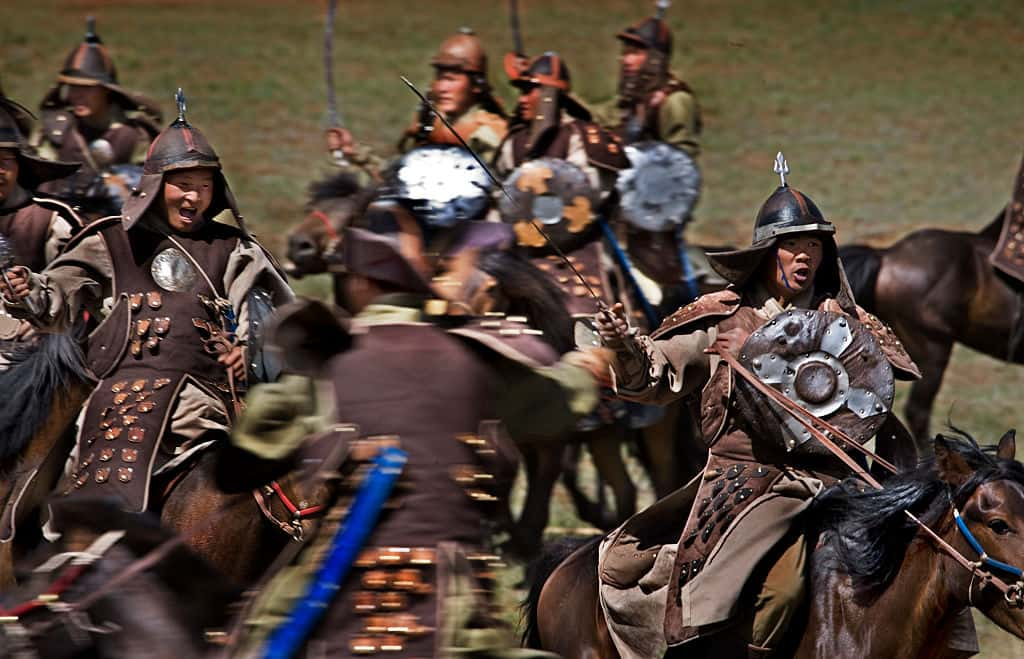 Getty Images
Getty Images
88. Becoming A Man Early
When Genghis Khan was just a child, his father Yesugei was poisoned by a rival tribe, the Tatars, when they sneakily offered him poisoned food. Genghis, who had been away, went back home to claim his position as chief of the tribe, but the tribe refused and abandoned Genghis' family instead.
89. The Decimation of Persia
Genghis Khan was responsible for the deaths so many Persians (modern-day Iranians), that the population of Persia didn't return to pre-Mongol numbers until the 1900s, nearly 700 years later.
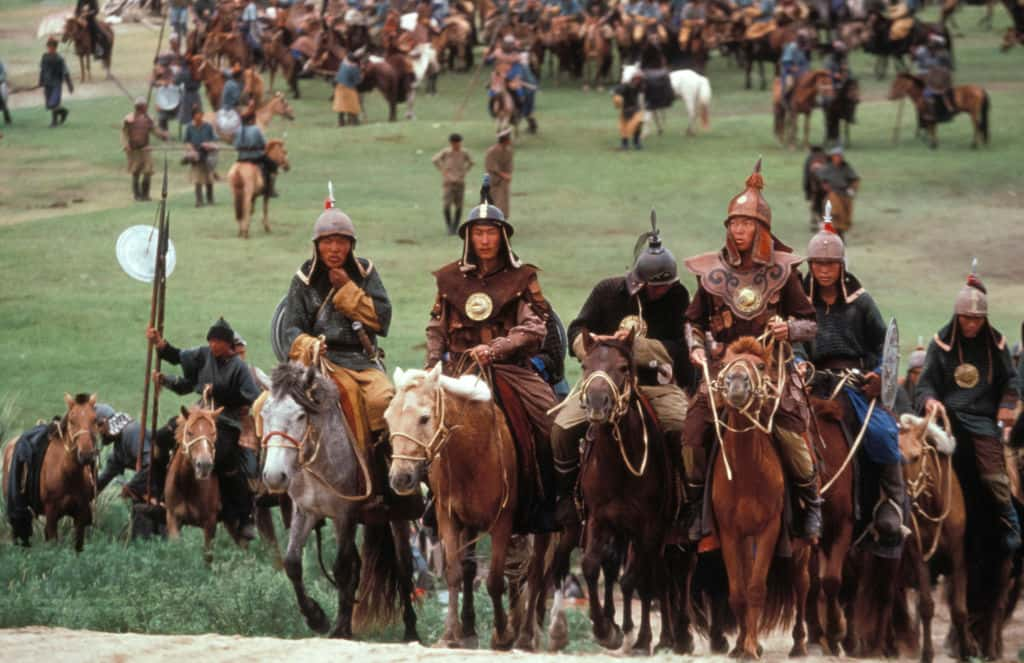
90. Born Under A Bad Star
The troubles still weren't over for the young Genghis. He also ended up being abducted by an enemy clan as a teenager, and had to make an escape to win his freedom and continue his rise to power.
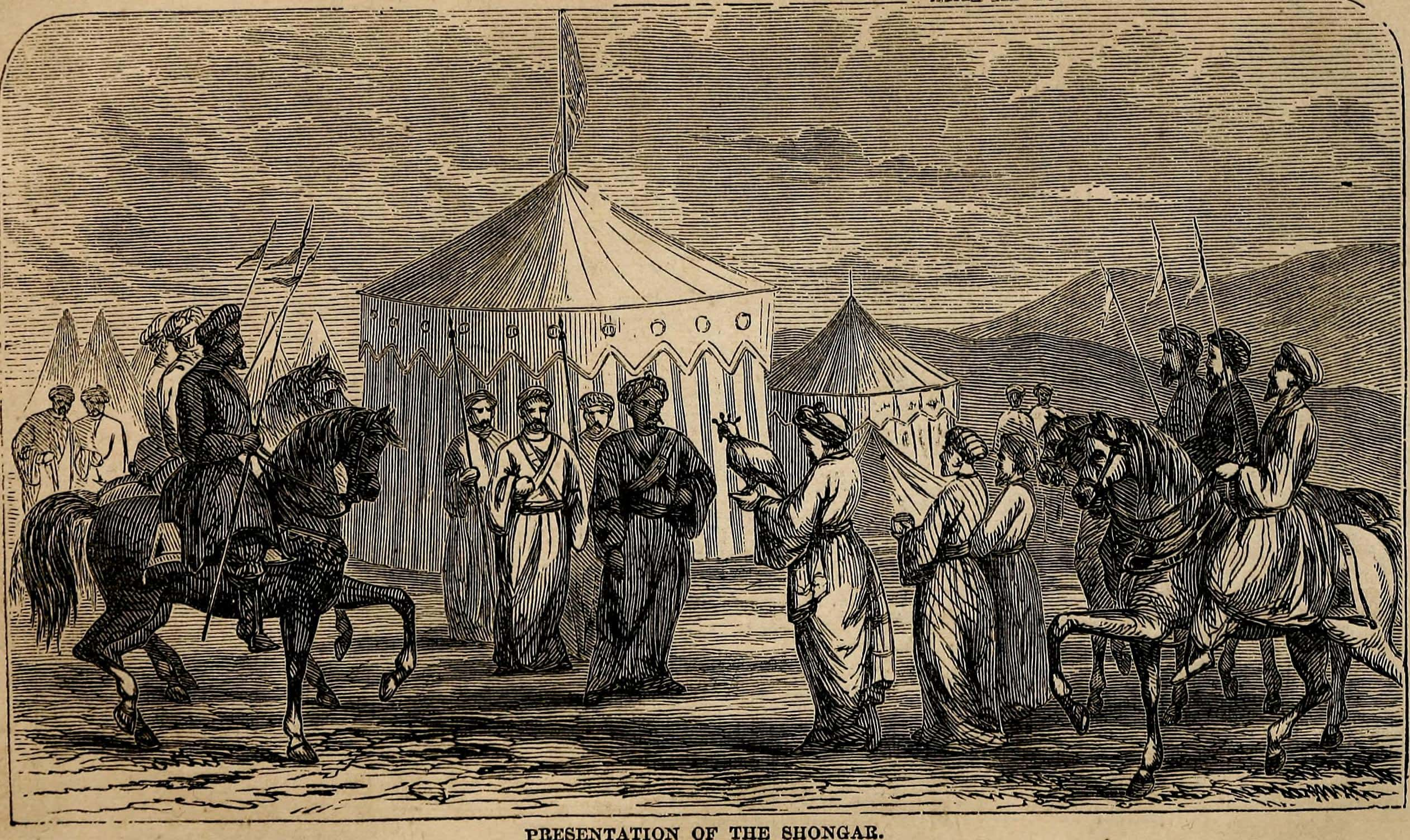 Wikimedia Commons
Wikimedia Commons
91. Mothers Before Brothers
Life in Mongolia when Genghis was young was not a piece of cake, to say the least. After his father's death, Genghis' family lived in poverty, and Genghis' half-brother Begter was beginning to eye up Genghis' mother Hoelun as a potential wife. Basically, Begter was looking for ways to flex his power as the oldest boy in the family. This didn't sit well with Genghis, and when he was 10 he ended up murdering Begter on a hunting excursion with the help of another brother.
92. A Feast for Crows
A legend says that once, when the Mongol horde defeated the Russian forces, they celebrated their victory in gruesome style. They took all the survivors of the battle, laid them on the ground, and put a wooden slab on top of them. The Mongols then proceeded to eat a victory feast over their enemies, watching as the last of the survivors were slowly crushed to death beneath them.
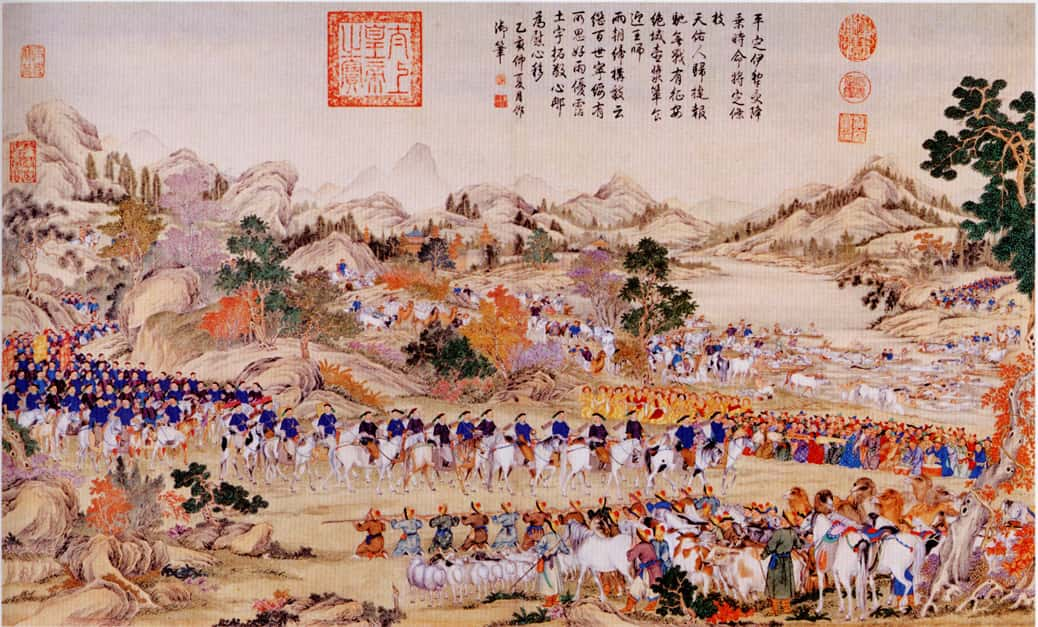 Wikimedia Commons
Wikimedia Commons
93. Hand-Picked
To many Christians, King Herod is the bloodthirsty villain of the Bible, the jealous despot who ordered the slaughter of newborn babies throughout his kingdom following the birth of Jesus Christ. To his subjects, he was Herod the Great, the paranoid tyrant who imposed oppressive taxes to fund his massive building projects, and crushed all opposition.
And to his Roman masters, he was little more than a reliably loyal—and wealthy—puppet-king. Throughout history, opinions of Herod the Great have not been…well, great. But there’s more to this New Testament dictator than meets the eye.
94. The Opposite of Christmas
According to tradition, December 28 was the day Herod ordered the Massacre of the Innocents. To mark the terrible event, medieval Christians in England celebrated “Childermas Day,” or “Holy Innocents Day.”
95. Behead of the Family
Herod’s reign was marked by discontent among his subjects. As his reign wore on, Herod became increasingly paranoid and began to suspect even those closest to him of conspiring to have him deposed—and the consequences were utterly disturbing. From 23 BCE to 6 BCE, Herod ordered the executions of his wife Mariamne, her grandfather, her mother, her brother, the two sons he and Mariamne shared, as well as his eldest son, Antipater.
Their crimes? Either suspected infidelity, conspiracy, or both.
96. Throwing the Baby Out With the Bathwater
There comes a time in every king’s life when he has to wonder “How will I be mourned?” Paranoid Herod suspected his subjects hated him, and indeed they did, which made him very self-conscious. Herod left explicit orders that, in the event of his death, a group popular public figures should be assassinated; that way, a general sense of public grief and mourning would fall over Judea.
97. Asking Too Much
Despite the king’s orders, Herod’s son and sister refused to carry out the assassinations. After Herod’s death in 4 BCE, those popular Judean diplomats continued to live rich, full lives, while the people of Judea mourned very little.
98. That’s So Sweet
While the Massacre of the Innocents is definitely bad PR, perhaps the weirdest story told about King Herod was that he had his wife, Mariamne I, preserved in honey after her death. Mariamne was executed on her husband’s orders, but Herod found her to beautiful to be buried and kept her preserved body for seven years. Some even claimed Herod had er, relations, with the body.
99. Not the Way I Heard It…
In another version of the story, the preserved body was that of a Hasmonean princess who threw herself from a roof rather than marry Herod and fulfill his wish for royal legitimacy.
100. History's Worst Bullies Get What They Deserve
King Herod suffered from paranoid delusions, rage, and perhaps less dramatically, arteriosclerosis, but his death in 4 BCE came at the hands of a mysterious and agonizing illness. It was so mysterious, in fact, that modern doctors are still not able to identify it. At one point, the pain was so excruciating that the king attempted suicide.
The illness came to be known, among the Judean people, as “Herod’s Evil.”
Sources: 1, 2, 3, 4, 5, 6, 7, 8, 9, 10, 11, 12, 13, 14, 15, 16, 17, 18, 19, 20, 21, 22, 23, 24, 25, 26, 27, 28, 29, 30, 31, 32, 33, 34, 35, 36, 37, 38, 39, 40, 41, 42, 43, 44, 45, 46, 47, 48, 49

